Farmers harvest soybeans as trade stays in limbo
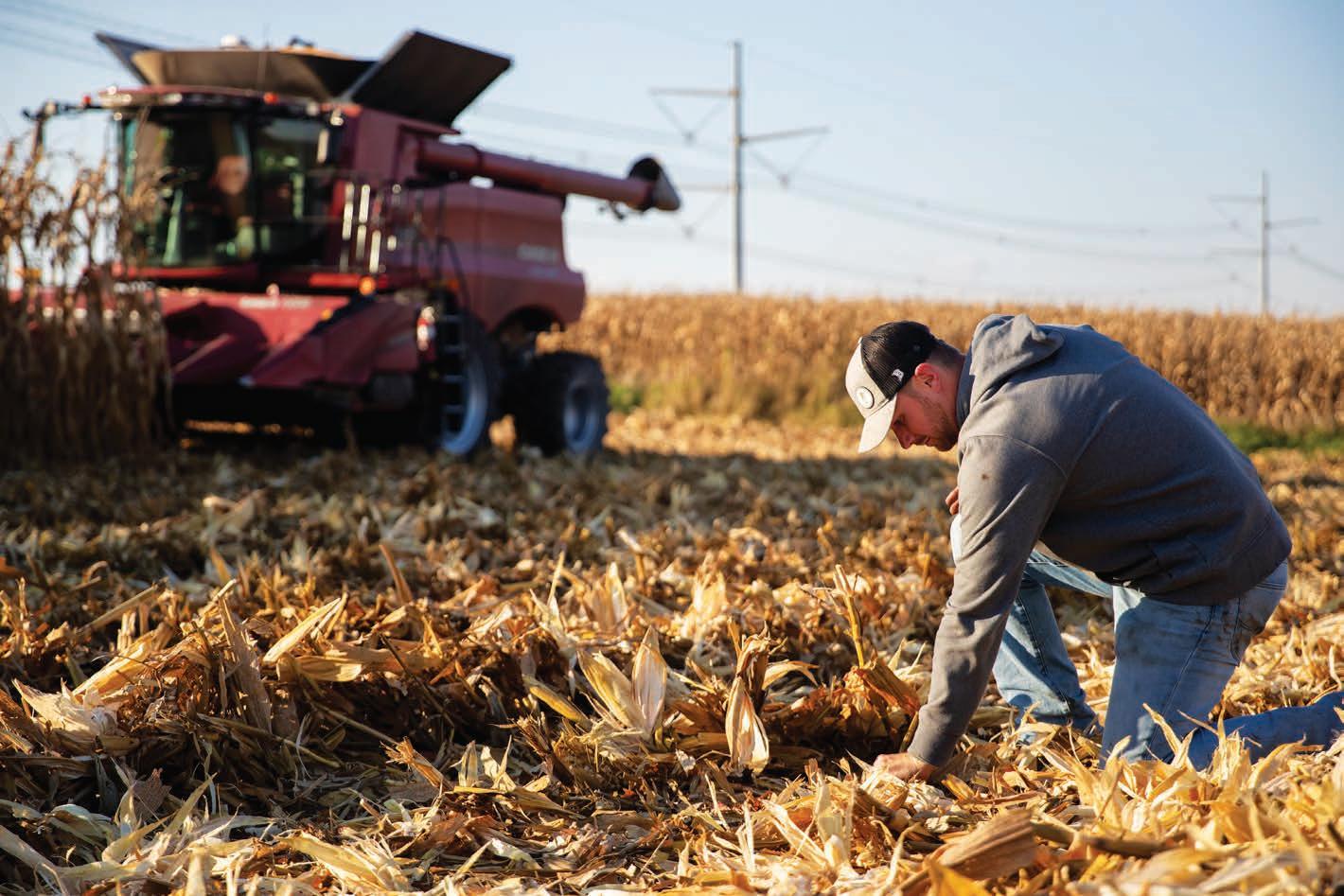
Iowa soybean farmers are harvesting what the Iowa Farm Bureau says could be a record crop this year, with an expected 53 bushels per acre. But Verne Hosek, who lives outside Fairfax, isn’t optimistic about making money this year.
Hosek, who farms hay, soybeans, and corn in northwest Johnson County, said his operation has been squeezed from both sides of their balance sheet as rising costs on fertilizer, machinery, and higher interest rates have increased his expenses, while soybean and corn prices remain low.
“Either we’re making less money or losing money each year,” Hosek said.
Inflation, high interest rates, and record production
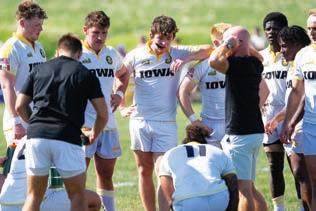

mixed with status quo demand have spelled a “storm” over the agricultural economy since it began to retract in late 2023, Iowa State University agricultural economist Chad Hart said.
A strained agricultural economy mixed with tariffs that raise prices on fertilizer and machinery, coupled with a trade war that squashes demand in an exportdriven sector and drives down already depressed prices, all make for a tough time for Iowa farmers.
“It’s just a recipe for some really rough times in the agricultural economy,” Hart said.
Iowa’s soybean farmers will be hit the hardest as China increases pressure on the U.S. to remove the reciprocal tariffs implemented by President Donald Trump as a way to balance trade relations. A boycott on buying American soybeans by the world’s largest soybean consumer spells doom for Iowa soybean farmers who export roughly 40-50 percent of their crop, half of
which goes to China alone.
The Trump administration has put in motion plans to use internal U.S. Department of Agriculture funds, tariff revenue, and other sources to give farmers a cash infusion to help solve liquidity issues for farmers.
However, many farmers rebuke the idea and instead call for Trump to change his trade policy and not damage current trade relationships.
Iowa Corn Growers President Mark Mueller said he sees another 1980s farm crisis coming if the administration and Congress don’t act soon.
“We are producing way too much, and we don’t have enough markets for it,” Mueller said. “So why are we shooting ourselves in the foot with some of the few remaining markets we do have left, the export market in particular?”
Iowa City’s world-class Wagyu
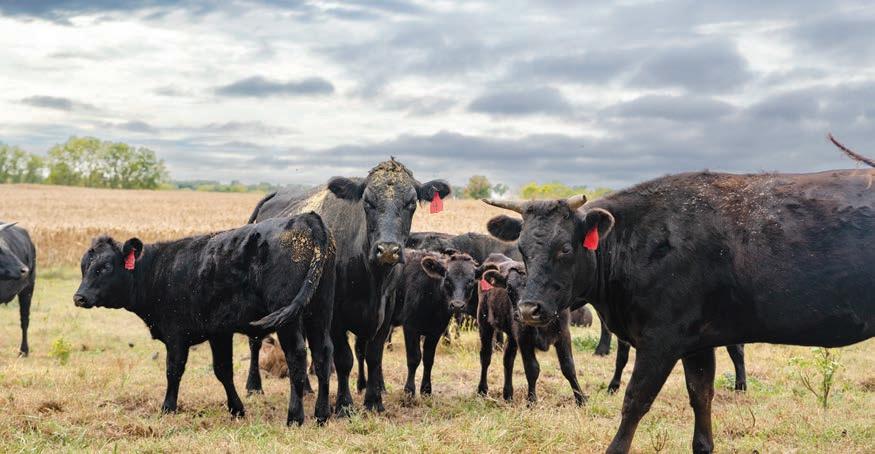
Many of the over 17,000 beef cattle operations scattered across Iowa share similarities in appearance and production, according to the 2022 USDA Census of Agriculture. However, indistinguishable from the farmhouse and livestock building setups inhabiting most corners of the state are a small
subset selling a very unique product: American Wagyu. Wagyu beef is a premium-quality meat har ested from a speci c breed of cow, known for the thinly-webbed “marbling” of its fat throughout, creating a distinct-looking, tenderly te tured, and supremely a orful cut of meat.
According to the American Wagyu Association, there are just under 40 registered Wagyu operations in the state of Iowa. One stands out, however, with close
connections to various Iowa City eateries and fine dining establishments. iy American agyu, owned and operated by Iowa cattle farmers Kyle Schuchmann and Sarah Bailey, can be found just outside Iowa City. en further, iy is currently working toward earning a chemical-free moniker and a top-five spot in the Triple Crown Steak Challenge, a nationwide meat quality competition, highlighting Wagyu’s growing role in Ameri -
can beef production both on the farm and in the kitchen.
With its origins in Japan, Wagyu is considered a delicacy by many due to the rigorous and culturally entrenched methods the Japanese devised for raising and butchering this specific gene pool of cattle. Every detail matters, down to the feed the animal receives and the razor-accurate cuts of meat not commonly practiced outside of Japan, Schuchmann said. American Wagyu is distinct from Japanese Wagyu for a variety of reasons, Schuchmann said. Many American Wagyu are halfblood, or cross-breeds between authentic Wagyu and Angus cattle. Japanese Wagyu is also harvested in a very specific way. iy is apanese for reedom,” and Bailey said she chose the name to pay homage to the practice’s Japanese roots. However, Schuchmann said iy s agyu are full blood and are harvested in the Japanese style.
Bailey was the one who started raising Wagyu cattle. She has worked in livestock her whole life, with initial ties to show cattle and an ex-father-in-law with connections to Japanese businessmen through a career with General Motors, she said. Those Japanese connections
“Something
U.S. Sen. Chuck Grassley, R-Iowa, in an Oct. 6 speech on the .S. Senate oor, said he is seeing parallels between the 1 0s farm crisis and owa farmers current plight.
here is a not so perfect storm brewing for farmers in my state of owa and in agricultural states generally, rassley said.
rassley said that Congress was too slow to act in the 1 0s, which resulted in a stark increase in farm bankruptcies and farmer suicides. m here saying don t want to see it happen again, rassley said. e can t be complacent, knowing the history of Congress being too slow to act. So, Congress ought to act now before it s too late.
owa farmers face decreasing net farm incomes, higher production costs, and lower commodity prices like they did in the 1 0s how e er, land alues ha e remained high, which hit a record 4, 0 per acre in August 202 , according to the arm ureau unlike the 1 0s, art said. don t want to diminish the fact that some farmers will declare bankruptcy, and we are see ing an increase in that, but that said, e en in a really great year, we ha e farm bankruptcies, art said. t is like any other industry in that not e erybody s cut out or lucky enough to be able to do it. he economy tends to wean out those who can t nancially sur i e.
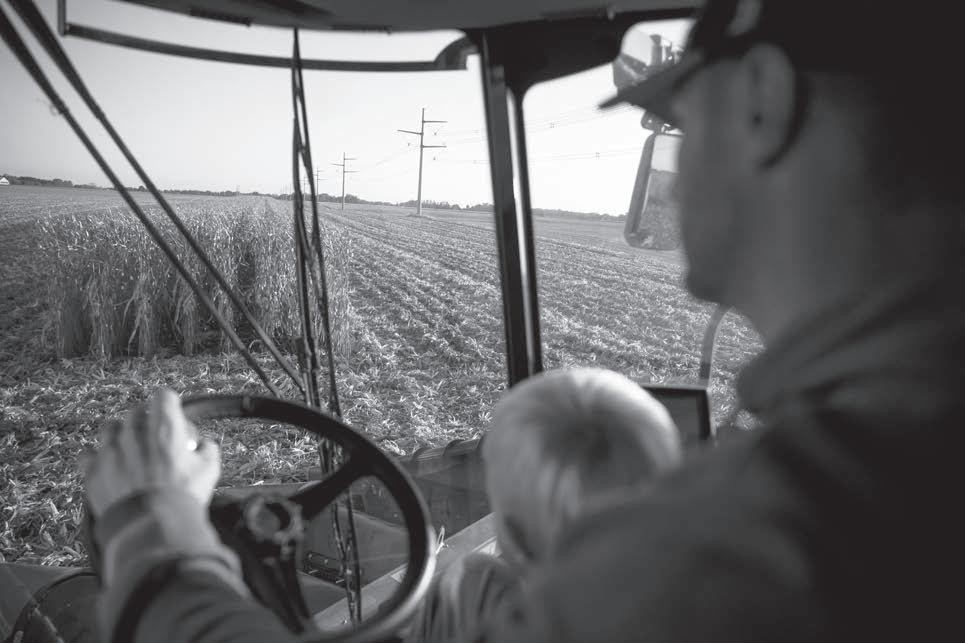
arm bankruptcies ha e nearly doubled the number from the same period a year ago, with 2 cases nationwide led o er the rst three months of 202 , according to loomberg aw.
art says the agriculture industry will lose many new farmers, which it desperately needs, from this economic downturn.
he rump administration s trade policy has been a bitter pill for farmers to swallow, owa Soybean Association resident om Adam said in a statement on Oct. 2.
hat bitter pill translates to billions of dollars. An S study found that owa s soybean industry stands to lose 1. billion from rump s reciprocal trade policies, more than a uarter of the industry s . billion alue. he owa corn industry is e pected to lose 4 million, owa s pork industry is e pected to lose 1.1 billion, and owa s ethanol industry is e pected to lose 1 million.
otal losses could amount to nearly .4 billion this year due to reciprocal trade and tariffs. hough the economic downturn had been coming since before the current administration took office, adding tariff turmoil on top of that reality has pushed owa farmers to the brink, art said.
Since the CO 1 pandemic, in ation has been a concern for most U.S. consumers, Hart said. hose rising costs also put farmers in a pinch.
arming crops re uires a signi cant amount of capital and supplies to increase yields and make farming pro table. Since 2021, production costs ha e risen more than 0 percent, according to data from the .S. epartment of Agriculture s ational Agriculture Statistics Ser ice.
Of those, fertili er and chemicals ha e increased the most, with fertili er costs rising by more than 4 percent since 2020, and chemical costs increasing by 21 percent since 2020.
n ation is a signi cant reason for the increase, and tariffs ha e added pressure to an already substantial rise in prices. oughly 10 percent of nitrogen and phosphorus fertili ers are imported, art said, and 0 percent of potassium fertili er, or potash, is imported from Canada, which has a 10 percent tariff on imports.
t s put a big time hurt on us may or may not make money this year, Muller, the owa Corn rowers Association president, said. know a lot of my contemporaries won’t make money this year. And fertili er, seed, and chemicals, those are our three biggest e penses.
ariffs largest impacts are not on fertili er costs instead, they impact costs on parts and machinery. owa based agricultural manufacturing companies such as ohn eere and in e Manufacturing import parts from all around the world as part of their global supply chain, art said.
his has resulted in a nearly 0 percent increase in prices for machinery, repairs, and parts since 2020, according to data from the S A s ational Agriculture Statistical Ser ice, with in ation also playing a key role in increasing prices, art said.
ell, the main thing is, machinery repairs ha e gotten so much more e pensi e because the parts are so much more e pensi e, osek, a ohnson County soybean farmer, said. e don t e en end up buying e uipment , and we don t e en buy because the interest rates ha e gone up too.
ogan yon, the former president of the owa Corn rowers Association, said e ery time he has to buy a part for his farm machinery, he can see the immediate effects of tariffs.
hen ha e to go buy parts or components that are manufactured in aiwan or apan, or China, yon said. hat s where it s probably hurting me more uickly, and it feels a little bit more personal.
Mueller said steel tariffs ha e hit machinery costs hard, which were implemented in the rst administration, but were not lifted by former resident oe iden when he took office. ust about e ery piece of farm machinery
ha e is made out of steel, and so we re ust paying higher prices on that, Mueller said.
Mueller said many farmers oted for rump and ha e yet to recei e what they were promised more free trade.
will say that farmers, by a ery large ma ority, oted for the current president, and we e gotten a fair amount of promises, but not much action and e en fewer details, he said.
n addition to high input costs, commodity prices speci cally soybeans and corn, owa s two largest crops ha e remained low following a record high in 2022. his is largely due to an abundance of product from back to back good production years and a declining demand for those commodities, art said.
e re trying to get as many bushels as we can, because of low prices, osek said. ut, it costs more to get more bushels.
Currently, soybeans are selling at 10 per bushel, according to data from the S A s ational Agricultural Statistical Ser ice, and corn is selling at . per bushel.
According to estimates by S , it costs an estimated 11.1 to produce a bushel of soybeans, meaning soybean farmers are losing 1.1 per bushel this year. Corn farmers are also getting hit corn costs an estimated 4.22 a bushel to produce, meaning those farmers are losing 0.2 per bushel. his comes with a good production year.
Soybeans and corn are owa s two largest crop commodities, and with farmers losing money on producing crops, the owa agricultural economy is in trouble, art said.
However, a new problem has arisen for commodity prices, with tariffs arti cially reducing demand for American crops due to global reciprocal tariffs brought by rump to encourage an e en playing eld for trade.
As owa farmers continue to har est, a trade war is playing out between China and the .S. after rump le ied a 4 percent tariff on Chinese imports more than si months ago. n retaliation, China le ied a 20 percent tariff on .S. imports.
China has not imported a single bushel of .S. soybeans since May 202 , according to the American Soybean Association, and all other agricultural e ports to China are also down by more than half in 202 .
owa Soybean Association resident om Adam, a farmer from arper, owa, who farms soybeans, corn, oats, hay, and raises cattle, said in a statement that there is little to celebrate for owa farmers more than si months after rump s rade iberation ay.
e said the mood across rural owa and farm country is one of an iousness and frustration, while they wait for a resolution to Trump’s trade war.
Milestones are often worthy of celebration, but here in arper, owa, where e farmed for more than 40 years, there s little cause for cheer, Adam said in a statement. o, what has farmers and the businesses that support us on edge is not the weather but trade policy that s se erely straining relationships with key markets for the crops we produce.
China has also acti ely in ested in atin American soybean markets in an effort to circum ent buying from the U.S.
China s campaign to circum ent .S. soybean purchases includes buying more than 10 cargo ships of Argentinian soybeans, which occurred ust hours after the .S. announced it would gi e loans, currency purchases, and debt buying to stabili e the Argentinian economy. hich has left .S. soybean farmers in a tough spot, with lots of soybeans and nowhere to sell them.
he price of soybeans has dropped so far because reciprocal tariffs ha e been placed on our products after we

placed tariffs on prices to some of our best customers, said Aaron eley ehman, the president of the owa armers nion, which ad ocates for family farmers. So farmers are feeling the economic impact in a terrible way.
eley ehman said that rump s approach to tariffs is not what farmers need what they need is free trade.
e know that we need trade that is fairer for farmers and for workers, he said. ut this approach this chaotic approach it s not getting us there.
Mueller, president of the owa Corn rowers Association, said agriculture is more dependent on e ports than any other industry because the U.S. cannot consume it all.
e don t eat enough, we don t dri e enough we need the e port market, Mueller said.
Mueller said the corn growers association wants free trade because, in a free market, owa farmers win. e said reciprocal tariffs ha e damaged trading relationships around the globe and put .S. farmers who are dependent on e ports in a bad spot.
e farmers proclaim to want to let the markets work, and when the markets do work, we come out on top, Mueller said. e produce products more efficiently, more economically, at a higher uality, more sustainably than pretty much anywhere else in the world. ut then you start throwing tariffs, reciprocal or otherwise, it ust muddies the water, and makes us ha e to work that much harder to get our regular trading partners back to us. rump s epublican allies ha e said his trade war and reciprocal tariff strategy will open long term trade stability and e pand market access for American farmers. e need to deli er long o erdue, long o erdue certainty for rural America, and know that resident rump will not abandon our owa farmers, .S. ep. Ashley inson, owa, said in a Sept. 2 call with reporters. ut restoring our dominance and the global order when it comes to fair trade does not ust happen o ernight. Adam said in a statement that many farmers share rump s priorities, but his trade strategy has been an affront to farmers needs a free market.
Agriculture thri es when America leads on trade, Adam said in a statement. e can t afford to let uncertainty and political maneuering erode the markets farmers ha e spent decades culti ating. he crop is here. he uality is pro en. he demand e ists. hat s missing is the resol e to reconnect America s farmers with a world of buyers who want to purchase our soybeans. t s time to get trading again.
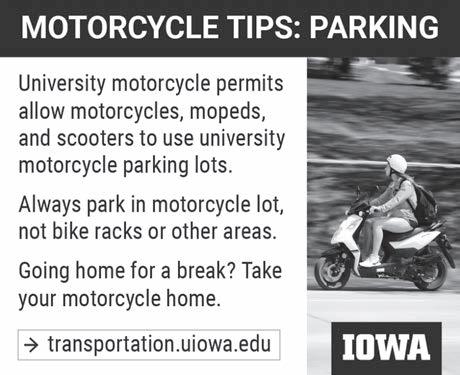
ultimately led to her discovery of Wagyu, completely changing her outlook on raising livestock. was really getting tired of the show stuff, ailey said. “And I’m like, ‘How can I optimize the cattle?’ I want something that eats well, and I want something consistent. And so started thinking about switching o er to agyu.
ailey said she made the switch 2 years ago. Originally, iy sourced its full blood agyu cows from uslinch, Ontario, from a agyu breeder named en urosawatsu, owner of agyu orld, a farm in uslinch. Se eral years later, she brought her skills in agyu to Schuchmann, then exclusively an Angus farmer, and they have been partners since.
Schuchmann said urosawatsu, among other apanese agyu e perts, educated ailey on raising uality agyu, which is more of a specialized practice than regular commodity beef production. e re artisan, but that s why we win, he said. hat s why our stuff is the best.
After traveling hundreds — if not thousands — of miles, a steak is sectioned off by type, whether that be Angus or various grades of American Wagyu — a scale which typically runs from 1, or as low as 4 .7 percent agyu, to full-blood, or 100 percent Wagyu.
hrough the lens of a speciali ed camera, a Meat mag ing apan, or M , camera, lab workers analy e the fat percentage, color, and other characteristics of a given steak. he meat is placed into the aws of a precise cutting machine, known as a arner rat ler shear, and a com puter gathers data on the meat’s resistance to the blade, which exerts pressure identical to a human bite.
Fatty acids are extracted from the steak, tested for health attributes, and e entually fro en. Once heat is applied, the steaks are ranked from lowest to highest melting points. astly, a panel of udges sits down and tastes the steak, udging it on uiciness, a or, and tenderness.
Once the e am is completed for each steak from each of the almost 0 entrants, a winner can be decided.
his process is the rigorous, scienti c process by which steaks are udged during the riple Crown Steak Challenge, ed ull Cattle Company owner and challenge carcass grader esi Cicale said. he challenge occurs annually and is ongoing at the ni ersity of California, a is, with results expected by early November.
Cicale is also a researcher speciali ing in studying car cass grading, or scienti cally analy ing the e pected eating condition of the Wagyu, and the health attributes of animal products. o her, iy s full blood agyu is some of the best she has seen, resulting in her con dent estimate they will receive the chemical-free label.
ha e a relationship with yle and Sarah , because once I start seeing that they’re consistent, I start needing them to continue to send in samples for research, she said laughing, indicating iy s uality is self e ident.
Schuchmann said high uality agyu is also healthy, referring to research conducted by indi iduals like Cicale about the health effects of agyu.
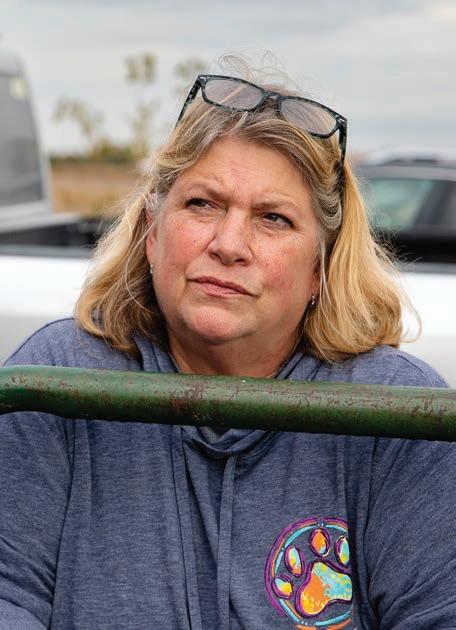
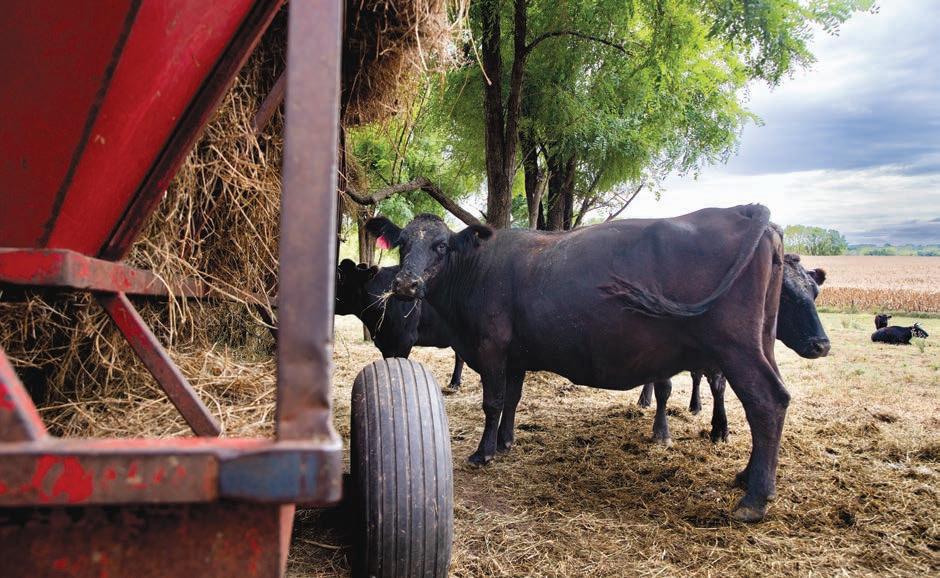
According to the National Institutes of Health, the kinds of monounsaturated fats present in highly marbled meat,like agyu ha e health bene ts, including lower impacts on cholesterol and a reduction in risks for cardiovascular disease, as opposed to the saturated fats typically found in most red meat.
Achie ements in the riple Crown challenge are a nationwide accolade, and among the seven bulls present in iy s operation, Schuchmann points to one as a true breadwinner Oh o, a full blood agyu bull, who Schuchmann and ailey say is a genetic freak.
“He will pass on himself in a better form no matter what he touches, which is not normal, Schuchmann said. So he can reproduce himself over and over and over again, consistently. Consistency is a huge factor in anything you do.
Wagyu bulls and the associated genetics to create uality meat are no cheap pursuit. ailey has worked in arti cial insemination of li estock for the ma ority of her life, a skill she said has combined with research and effort to produce high uality meat resulting from genetics. ut, the genetics must come from somewhere. Schuchmann isuali es the amount of agyu semen bought as being the si e of a cocktail straw. he cheap est he referenced was 00 a stick, reaching as high as 20,000 a stick.
Oh o is ust one part of iy s operating that allows it to create world class products. ailey said she learned from apanese agyu e perts 2 years ago that animal treatment, environment, and feed programs are the most important elements of creating uality agyu. or iy , their agyu has its own terroir, rench for taste pro le, meaning it is distinct from all other Wagyu worldwide.
Schuchmann and ailey grow their own feed and raise cattle exclusively on their own land, incorporating the individuality of their grass and water into the animals, setting it apart from other Wagyu.
On their land, ailey and Schuchmann plant and har est 90 bushels of grain feed and seven bales of hay per animal, per year. Across all their land northeast of owa City, iy has chemical-free practices and is self-sustaining. He said self sustainability creates their irreplicable taste pro le. Wagyu are also generally harvested at a much older age than Angus, ailey said, as they are generally kept ali e until around 0 months old as opposed to 12 22 months for Angus.
She said the combination of added time, effort, and highly speciali ed practices is simply nancially unsus tainable for many farmers. o e, in iy s case, she said, e plains why the added effort comes easy.
“I was making a superior product with show cows in what they did, ailey said. And so in beef, that s what wanted. wanted to make a superior product.
iy sells a agyu let at 120 per pound, a ribeye at 70 per pound, a hanger at 40 per pound, and se eral other cuts at arying prices. Considered a delicacy, agyu costs are notoriously stiff.
Generally, Wagyu does not go to any random restaurant. n owa City, high uality, ne dining establishments are the ones advertising Wagyu steaks on their menu at market price depending on the value of the meat at the time, including the ebster, he ilder, and oseph s Steak
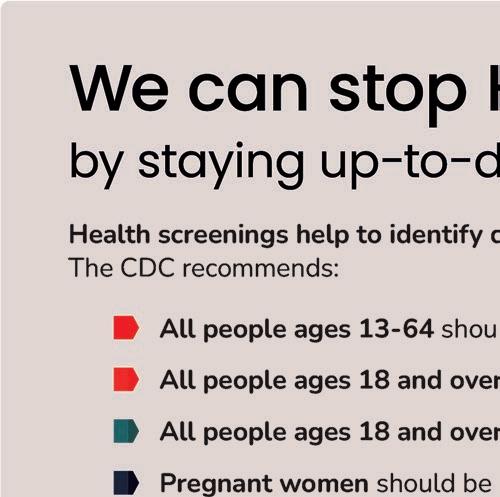

house. iy sells to the ebster, he ilder, and Sushiya, among other spots not limited to ust owa City.
he S A predicts beef and eal prices will increase nationwide by 11. percent in 202 from last year. Con sumers feel that pressure, but this is another element where agyu especially high effort, high uality agyu — stands out.
Stephan ogardus, corporate culinary director of rad uate by Hilton Hotels, is an expert chef who helped design the owa old urger at he ilder at raduate owa City, which is ground agyu from iy . e said the self sus taining nature of Wagyu operations allows them to remain relatively price inelastic.
rice inelasticity is an economic condition where the price of goods and services does not change at the same rate as the change in demand or cost of production. og ardus said costs uickly change for the a erage commodity beef producer, resulting in similar changes for consumers.
“Distribution chains, farming methods, those prices are controlled, he said. So with e ery recall or changing feed price or taxes on land, or whatever the incentive or subsidy or cost that goes into it it uctuates.
ue to operations like iy s sustainability, ogardus said it is easier to remain unaffected by changes in input prices, property taxes, and more, which is why he prefers to always buy locally, when in Iowa or elsewhere.
ut when m at home, look for a farmer, a local per son, that doesn t ha e the same uctuation of costs or subsidies, he said. ecause when you re not paying in the mainstream system, you have the opportunity to have more autonomy over your product and the pricing structure of your product.
agyu s place in dining is something ogardus said he wants to continue exploring as it becomes more mainstream by using it for more than traditional lets and steak, such as in more commonly available dishes like burgers, meatloaf, and more.
hate er it is, if you put that product in an identi able form, it makes for a uni ue ingredient that s special a little bit of a niche, but it s still approachable, he said. And think that it s something that stands out.
espite the high prices, added effort, and ne dining moniker on most Wagyu, it is slowly breaking further into mainstream farming and dining.
Sam elman, chef and co owner of the ebster in owa City, said the ebster pays anywhere between ,000 and $10,000 per animal for six or seven animals a year. he ebster has recei ed national acclaim, landing on best restaurant lists published by The New York Times and USA Today. Gelman said the restaurant uses most cuts of the animals they get from iy , adding they get much of their agyu from the owa City farm.
elman said a uality assured relationship is one advantage of using local Wagyu, as well as greater access to more cuts of the animal. Some stateside agyu con sumers are priced out of the market as foreign producers commonly only export their highest-grade, most expensive cuts.
ust like to be able to work with people that know on a rst name basis, that are right down the road, and ha e a relationship with, he said.
espite all the time, effort, and high dollar alues placed on the products iy creates, Schuchmann and ailey said they continue doing it not for any monetary incentive or the acclaim, but for the opportunity to contribute to the culture of high effort production and high uality food.


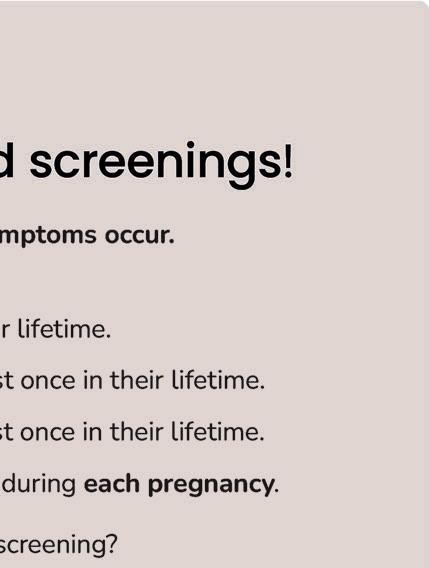

OPINIONS
The food students willingly eat is vile
It’s time for University of Iowa students to

Post-dorm life can be rough. Deadlines, meetings, work, transit, studying, and more leave students with little time to cook meals or enjoy the finer things in life, like palatable food.
Without the accessibility of dining halls, students, in their efforts to balance what little time and money they have, will boil pasta or noodles and combine them with whatever cheap sauces they find at Walmart. Canned soup and frozen food also make for quick and easy meals. If a student is daring enough to actually cook, rice and beans may be on the menu.
The search for cheap, convenient food often leads students down malnutritious paths where they forget their sense of taste and their diet needs.
In search of a creative solution to their food problems, some students come up with their own time-saving hacks, like prepping all their meals for the week in one day or leaving all their dishes in the sink for their roommates to clean up — not naming names.
Fourth-year University of Iowa student Kaden Garrett has his own unique hack: eating the same meal every day.
On a normal day, typically between 8 p.m. and 1 a.m., Garrett gathers a gourmet bowl of Crispix cereal, two pieces of string cheese, a Barebells protein bar, and a ciabatta roll as his fuel intake for the day.
The next day is the same meal, and will be every day indefinitely until he either has the time and motivation to change it, or some kind soul comes to save this man from his eating habits.
Garrett has been following this specific diet for the past two years and plans to continue in the future. Rather than refer to it as his diet, he calls this behavior “a supreme level of delusion and laziness to prepare anything that takes time to make.”
To many students, this food apathy is a relatable feeling. Classes and busy schedules put such a strain on students, their deluded brains convince them the food they threw on their plate is an acceptable meal. Garrett, at least, is aware of his situation.
“I would like to put a disclaimer to not follow any of the things that I do,” he said. “Medically speaking, most doctors would consider what I do as eating malpractice.”
For students who are interested in knowing what a nutritionist-approved diet actually looks like, the U.S. Department of Agriculture recommends at least half of one’s plate to be composed of fruits and vegetables, and the other half to be split amongst grains and proteins. If your dream diet includes cereal and milk at midnight, check out MyPlate. gov and consider meal prepping some chicken or at least some strawberries.

Whether you’re eating the same meal every day or you’re simply sick of dry pasta, you have likely wanted to break free from monotonous meals. One way to dispel boredom is to shock your taste buds, also known as creating your own low-budget recipes. I’m not saying these are the most nutritionally balanced or even tasty in the slightest, but there are other options.
Mark Christoffer, a fourth-year UNI student, often makes what he calls “slop.” Per his definition, slop is a combination of food thrown into a bowl containing a liquid component and a solid component. If you are curious if the food you are eating is considered slop, he recommends the fork test: if a fork holding up your mixture holds some
substance and lets some of it fall through the slits, you are eating slop.
One of Christoffer’s favorite slop recipes is a combination of macaroni and cheese, canned tuna, and cream of mushroom soup. While the meal doesn’t look pretty, he claims it tastes quite yummy. Another creative recipe he enjoys is
microwaving a hot dog for 30 seconds, putting it in a bun, covering it with pasta sauce, pepperoni, and provolone cheese, then microwaving it for another thirty seconds. Christoffer claims when his schedule becomes less busy, he will likely invest more effort into his recipes.
“Slop calls to me when I have no time,” he said. Lack of time is the main cause for the unhinged eating habits of students. There are ways to make time to eat cost effective, non-depressing dishes. Rather than make meals on the fly, budget and prepare them ahead of time. I beg you to remember your nutrients and do not fall into the sad eating routines of the typical college student.
Hookup culture is not for everyone

People shouldn’t be pressured out of having casual sex if they want to, but people who don’t want to have casual sex shouldn’t feel pressured either.
Throughout elementary school, middle school, and high school, my older sister would ask me regularly if I was dating anybody yet. Each time, I would remind her I was an unpopular dork, so, no. She’d look disappointed, remark on how many boyfriends she had by my age, then change the conversation.
When I got to college and finally started dating someone, I assumed she’d be thrilled I was coming out of my shell and nding my element. nstead, she gave me another disappointed look and told me she wished I would sleep around more so I could see what’s out there.
“You shouldn’t tie yourself down too early,” she said. “That’s what college is for, after all.”
As ba ed as was by this apparent heel turn, I can’t fault her line of reasoning. It’s true that, for many people, college is the perfect time to engage in one-night stands or casual, sex-based relationships.
After all, when else will you be this young and hot surrounded by people your age who are equally as young and hot?
At a Big Ten college like the University of Iowa, it might feel like the only way to socialize is through the bar scene and the easiest way to meet new people is to just “grab a drink” — wink wink. It may not be a surprise to college students, but alcohol and hookup culture are closely correlated with a 2021 Journal of Public Health and Praces study led by Alice Ma showing about 52 percent of students have consumed alcohol before hooking up since they entered college.
I, in no way, want to discourage anyone from engaging in casual sex if that’s what they want to do. Slut-shaming is a big problem in its own right, and the fact many women — and men, for that matter — are looked down upon for seeking consensual ings is gross.
Dr. Lisa Wade, an associate professor of sociology at Tulane University, was interviewed in February for the Screenagers podcast about her work studying the social patterns of college students. According to her research, up to 70 percent of college students engage in hookup culture in some form or another. Further data concludes about 57 percent of this consensus have “mixed feelings” about the experiences they’ve had.
The other 43 percent, to be fair, have generally enjoyed keeping things no-strings-attached, with no evidence provided of anybody outright hating it. Still, it seems a little icky that, even when more college students than not say they aren’t completely comfortable with the lifestyle, they still engage with it.
This could be for a myriad of reasons, yet it seems a natural conclusion to assume at least part of their motivation stems from the idea college is their only chance to play the eld, despite ha ing the rest of their lives to date around and learn what kind of partner


The concept of college hookups is so baked into our cultural consciousness many students believe it’s now or never.
UI student, about their experience


I reached out to Val Lobo,



According to one of Wade’s college surveys, 70 percent of women and 73 percent of men would prefer settle down into a long-term partnership rather than hop from one partner to the next.Granted, there’s a hefty number of college students who only engage in hookup culture in between committed relationships, or at least with the intention of finding a committed partner
tionships are like in an adult setting.







they seemed to have generally positive feelings about it.
They did, however, admit even though they don’t regret participating in casual sex, they would prefer to be a part of a committed relationship.
This isn’t a unique opinion, either.













































If a relationship wasn’t meant to be, the couple can separate on mutual terms and get with whoever they want afterwards. Sometimes, though, a relationship works really well, and the idea of sacri cing it for the sake of getting out there doesn’t feel

It’s telling how many students who have casual sex out of societal obligation prefer to nd a signi cant College can be a great time to experience the sexual freedom of being single, but it can also be an opportunity to, for the rst time, learn what dating and rela








I’m graduating in a couple of months, so I think it’s safe to say my window for sleeping around with other students has officially closed. Do I wish I had been more “adventurous” during college? Maybe a little — it I love my girlfriend, though. And as of now, I am glad I did not give her anhd my relationship up for the sake of the college experience.
with the society since 1973. After being involved with the society for nearly 50 years, Bennett took issue with some of the legislature’s reasoning.
“This is relevant to all Iowans and it’s unfair and somewhat shameful for a very small group of people to make such a decisive action that’s very threatening,” she said.
Some of Bennett’s colleagues, friends, and professors also found several issues with these reasons and the way decisions around the closing were made.
“We have challenged them on their professional standards,” Bennett said. “We have support letters from major organizations across the U.S., all kinds of groups that are involved in this type of work, and academically trained people who have experience as librarians and archivists to be our allies.”
Concerns about where Iowa City's materials are going, how much is being taken, and what will happen to the materials have been discussed since the center announced its closure. Linda Kerber, a former UI professor, cites this as a reason for taking legal aciton.
“They announced they were going to move all the records to this museum in Des Moines, but they would only move 40 percent of the archive,” Kerber said. “They have never told us what's going to happen to the other 60 percent. It will be dispersed — important papers given to the archives with the understanding they would be here — protected in perpetuity.”
In the early morning hours of Oct. 6, a small number of local historians, including Bennett outside the Centennial Building, anticipating the arrival of Iowa Prison Industries laborers from Mount Pleasant, Iowa,
to begin carting out archival materials.
Later that morning, The Daily Iowan observed laborers carting documents through the building’s back door. Iowa State Troopers were present to keep Bennett and others from making contact with the laborers.
The laborers returned the next day, removing more archival materials from the premises. This is something Bennett, Kerber, and the lawsuit all claim to be wrong and worth legal action.
“Without public input or a clear plan, state officials have begun dismantling the Iowa City archive, laying off staff, and removing collections — many of which were donated under the condition they remain accessible in Iowa City,” the lawsuit reads.
Both Kerber and Bennett said the documents given to the historical society should remain in Iowa City for many reasons, but largely because the UI is the only university in the state offering a Ph.D. granting program for history.
“The historical society is right across the street from the edge of our campus, so students can just walk over and work in it,” Kerber said, “There's so much to be done. It's such a rich resource — the idea of erasing it just doesn't make sense.”
Absenteeism rates declining in ICCSD
Chronic absenteeism in the district has dropped from the previous year.
New data released by the Iowa Department of Education shows chronic absenteeism has dropped in the state by roughly 5 percent. This data comes almost two years after a new state law went into effect to address absenteeism rates in the state.
Senate File 2435, signed into law on May 9, 2024, required districts to set attendance requirements for their students. The district requirements include notifying parents when students hit the 5 percent, 10 percent, and 15 percent absenteeism threshold.
Districts across the state collaborated with truancy officers, county attorneys, and parents to implement the policies, with the new guidelines including an absenteeism threshold of 10 percent.
This threshold means students are considered chronically absent if they miss more than 10 percent of the 180 school days in a school year. Kari Vogelgesang, professor at the University of Iowa’s College of Education, said the rise in attendance can be attributed to the growing need for support and connection in schools.
“Attendance improves when students and families feel genuinely connected to their schools. Many of the strategies that make the greatest difference, such as pro iding food, clothing, reliable transportation, access to health supports, and even free period products, require sustained investment,” Vogelgesang said.
Vogelgesang is also involved with the Scanlan Center for School Mental Health at the UI, an initiative aiming to help improve the emotional, social, and behavioral health within school communities.

“[We] develop resources to help educators connect attendance concerns to underlying social-emotional needs, and we operate a clinic that supports children and adolescents with issues, such as anxiety, that can interfere with school attendance,” Vogelgesang said.

Vogelgesang said the COVID-19 pandemic played a large role in the increase of chronic absenteeism. At the height of the pandemic, chronic absenteeism in Iowa reached about 26 percent, compared to a roughly 30 percent national aver-
According to the Iowa Department of Education Technical Assistance, in the 2023-24 school year, Iowa’s rate had declined to around 22 percent. Current projections suggest by the end of 2025, the state average will be at around 16 percent, while the national average is expected to remain
Vogelgesang said this upward projection is a sign of hope for attendance numbers statewide and nationwide.
“Chronic absenteeism is not just a school issue, it’s a community issue,” Vogelgesang said. “Students who miss too much school are more likely to struggle academically, fall behind on graduation, and face limited career opportunities. he ripple effects are felt far beyond the classroom.
In those two years, the Iowa City Community School District, or ICCSD, said the district has been focused on decreasing chronic absenteeism rates.
“I believe one of the driving factors is our recommitment to emphasizing how important regular attendance is for our students, and then following up with support and assistance for students who are struggling,” Lisa Williams, ICCSD school board member, said.
The district recognizes students have barriers preventing students from attending school, and Williams said this is something the district is working on addressing. She said
UI students struggle amid government shutdown
Students and their families are handling income loss and other delayed government benefits.
“It makes me very worried about being able to live independently and pay rent,” Juarez said. “It really makes me worried about my ability to continue in school.”
the board has made sure to prioritize attendance by ensuring ade uate funding and staffing for schools.
“One of the reasons we are seeing success is because our staff reali e the importance in looking at students to see what barriers are preventing regular attendance, and then working to reduce those barriers,” Williams said. illiams said the district has designated staff to o ersee attendance at secondary schools, pro iding staff with professional development opportunities. Additionally, the district has made adjustments, such as implementing a process ensuring noti cations and letters are sent in the family s preferred language.
Williams said chronic absenteeism in the district dropped to 11 percent last year from 19.9 percent the year before, according to a February school board presentation
“As a board member, I just want to keep supporting these efforts because they are clearly working, illiams said.
The district has seen an increase in the average daily attendance, according to data collected by the district. In the 2023-24 school year, they reported a 93 percent average daily attendance. In the following school year, they saw an increase of over two percent, having a daily attendance rate of 95.3 percent.
According to the National Center for Education Statistics, the nationwide average daily attendance rate for public schools in the 2024-2025 school year was 91 percent, an increase from 90 percent in the 2023-2024 school year.
Kate Callahan, the director of student services for the district, said hearing from families is crucial to the success of their increasing attendance rates.
“We gain valuable insight from parents and students at attendance meetings, and our staff focuses on the root cause of attendance issues,” Callahan said. “Together we partner with families to develop realistic plans to support the family.”
For many people, the current federal government shutdown, resulting from a budget impasse between Republicans and Democrats in the U.S. Senate, is a distant issue or a minor inconvenience. But for some University of Iowa students, the current shutdown has real-life implications.
The shutdown began Oct. 1 after Congress failed to pass a federal budget for the new fiscal year. Lawmakers remain divided over government spending levels on certain programs, such as health care and foreign aid, leaving many agencies without approved funding.
For individuals like Elsa Juarez, a third-year UI student, the shutdown is impacting her ability to cover basic living costs.
As a single mother of two, Juarez relies on the Supplemental Nutrition Assistance Program, or SNAP, and the Special Supplemental Nutrition Program for Women, Infants, and Children, or WIC. According to the U.S. Department of Health and Human Services, SNAP services are expected to remain unaffected by the shutdown, as states are stepping in to sustain the program.
Despite the state stepping in, Juarez said she has not heard back from HHS after reapplying for benefits three weeks ago. While the state notes processing applications can take up to 30 days, Juarez said it has usually taken only about a week in her experience.
“I’ve called three times already, once every week, and I’ve either been given the runaround or left in a voicemail box,” she said. “That has never happened before.”
Due to the delay, Juarez said she is struggling to cover all her costs, even while working full-time.
UI first-year student Evelyn said the government shutdown isn’t just playing out on the news; it is a daily worry for her family. With both of her par ents employed by the National Institutes of Health, or NIH, the family is having to adjust to a lifestyle without income.
Evelyn has experienced increased anxiety about her academic future and her ability to attend college. She also admitted to feeling guilty about the financial strain her education and upcoming family visits have placed on her parents.

“I’m not there, and I feel really bad. I’m at school, and [attending college] costs a lot of money,” said Evelyn, who is originally from Maryland. “I texted my mom last night, ‘Should I be worried?’”
Evelyn said she is not unfamiliar with government shutdowns. She understood they sometimes happen but thought they only last a few days. However, she said this one feels different for her family.
“My mom said, ‘It’s not going to be done anytime soon,’” Evelyn said.
Following the shutdown, Evelyn said the family has taken measures to cut costs, pausing home renovations and delaying other household activities until consistent pay resumes.
The NIH is among the many federal agencies affected by the government shutdown. Nationwide, the NIH has stopped nonessential operations, with about 75 percent of its staff furloughed, according to the U.S. HHS. Being furloughed means employees are placed on temporary unpaid leave until government funding is restored. Essential operations include those whose “activities are deemed necessary by impli-
cation or for the safety of human life or protection of property.”
Ronald McMullen, a political science professor at the UI and former U.S. diplomat, said being furloughed can cause economic and psychological trauma for both the employee and their family.
“Trump is talking about firing or riffing government employees, so you don’t know if you’re going to be able to go back to work,” McCullen said. “There’s also a concern on whether you’ll be paid for the time you’re laid off. So for federal employees, it’s a time of angst, uncertainty, and hardship.”
The term riffing, or RIF, refers to a “reduction in force”, meaning permanent job cuts rather than temporary furloughs.
Students on campus have recognized the effects the shutdown has had on the country’s federal employees, and McMullen recognizes how discouraging this can be for those pursuing careers in public service.
“Many of my students who aspire to become diplomats, or other public services, it’s frustrating for their career objectives to see people treated so badly,” McMullen said.
Iowa kids, families get a head start
Amid funding cuts, the educational program gets Iowa children school-ready.
hen families in southeast owa drop their kids off at ead Start each morning, they re not ust sending them to preschool to learn their A Cs and 12 s.
he federally funded program offers free early childhood education, meals, and health screenings to families who otherwise might go without these resources, but recent funding cuts ha e left centers ghting to maintain full day, year round ser ices, according to ead Start program directors across southeast owa. ead Start offers support and care for families at or below 100 percent of the federal po erty le el, or 2,1 0 for a family of four, with no fees, meaning for care.
o ualify for the program, children need to be between the ages of and , and for the arly ead Start program, between weeks and years old.
Christi egan, early childhood di ision director for awkeye Area Community Action rogram, or ACA , said federal funding allows the organi ation to pro ide consistent, high uality ser ices supporting the whole child.
egan said the program s goal at ead Start is to prepare the child to be ready for school through identifying if any issues that may pre ent them from being pro cient in a skill. earing, ision, or de elopmental concerns are all areas the program can assess and pro ide assistance for getting in contact with a doctor who can address the concern.
Matt eClere, ead Start director at Community Action of Southeast owa, said ead Start ser es the most ulnerable children in the community.
he idea here is to help their kids be successful in school and in life, eClere said.
eClere said research shows low income children often enter kindergarten at a disad antage because they lack the same early learning e periences as their peers.
According to the ational ibrary of Medicine, students who come from low income families are more likely to start school behind their peers. he depth, duration, and timing of po erty all in uence a child s readiness for school socially and academically. ead Start programs aim to close that gap.
e look at kindergarten readiness as a guidepost for the work we re doing in the classroom, eClere said.
eClere said a large amount of the program s e penses goes to feeding children.
he kids that come to us are recei ing two thirds of their nutrition at school, he said. e gi e them a nutritious breakfast, lunch, and snack e ery day.
According to the School utrition Association, eating well throughout the day helps students thri e both inside and outside the classroom. Studies show many children eat their most nutritious meals at school. School meal programs play a key role in pre enting obesity, promoting o erall health, and boosting academic performance by impro ing kids diets and reducing hunger.
n ohnson County, ACA has 174 ead Start and arly ead Start slots, most of which are lled year round, with the a ailability of those slots differing from day to day.
Maintaining the amount of slots
ACA can offer has become more diffi cult after the loss of state funding through the owa epartment of ealth and uman Ser ices raparound Child Care lock rant.
ead Start programs routinely apply for new grants, and with a recent loss in funding, classrooms open 12 months out of the year ha e been reduced to 10 months.

hat certainly has a huge impact on families that were dependent on and always had that full day and full year ser ices, egan said. On those days that we re not open, they ha e to nd alternate care for their children.
o continue ser ing families, ACA combines federal, state, and local funding, including grants from ohnson County, the City of owa City, and nited ay.
Still, egan said rising costs and stag-
goal of caring for the children and families they ser e. andi aterman, disabilities coordinator at Community Action of Southeast owa, said e ery child recei es hearing, ision, and de elopmental screenings within the rst 4 days of enrollment.
tation for our students. hope o er time, our federal funding increases so we can ha e more support for our children with disabilities.
espite the nancial challenges, aterman said the heart of the program goes far beyond budgets and resources it s about the relationships built between families, staff, and the community. wish more people understood ead Start isn t ust about income, aterman said. amilies don t identify themsel es by how much they make they identify themsel es by their relationships and their community. e bring families together, and we make sure they ha e what they need to thri e.
nant federal funding ha e made it difficult to keep up, but they do its due diligence to apply for funding when it becomes a ailable, so the uality and support of their ser ices are ne er uestioned.
t is ust a balance of braiding funding together and budgeting appropriately, because all of our funds pay for 100 percent of our ser ices, egan said.
he cuts also affected staff members, who lost working hours as a result.
hat means fewer days they re able to work, egan said. hose are tough decisions. e re always looking at how we can pro ide what families need, but we also ha e to make sure we ha e the nancial strength to continue those ser ices.
At the classroom le el, teachers and support staff alike remain focused on their
f any concerns are noticed on the screenings, aterman said she talks to the teachers and obser es classrooms.
f concerns persist, aterman said staff hold a support meeting with the family to discuss ne t steps. ogether, they determine how to best assist the child in the classroom and, if needed, connect them with outside resources, such as the Area ducation Agency, a doctor, or mental health ser ices.
She said funding limitations affect e ery part of the program, including the ability to hire more staff pro iding ser ices for children with disabilities.
unding always has an impact, no matter what program you re in, aterman said. e would absolutely lo e to ha e more staff in our classrooms and transpor-
eClere said the federal go ernment typically pro ides a cost of li ing ad ustment, or CO A, each year, but programs didn t recei e one last year or this year.
e re hoping there s a CO A, but we e been fortunate enough to be able to offer some increase in our salaries we want to be as competiti e as best we can with other preschools and the school district as well, he said.
egan said the impact of ead Start remains clear in e ery community it ser es.
e can t do it by oursel es, she said. e work with partners doctors, dentists, schools, and community organi ations all focused on helping children and families succeed. hen we support the child, we support the family, and that builds stronger communities.
Hands-free driving law takes e ect in Iowa
The law prevents drivers from holding cellular devices while behind the wheel.
aw enforcement officials across owa ha e issued , 00 distracted dri ing warnings since the new hands free legislation signed into law by owa o . im eynolds, went into effect on uly 1, Sgt. Ale inkla, public information officer for the owa State atrol, said.
he new legislation prohibits dri ers from holding electronic de ices while behind the wheel.
efore the hands free legislation, the distracted dri ing law, or Senate ile 2 4, went into effect in 2017, and was the only law in owa restricting the use of cell phones while dri ing. rett epkes, bureau chief of the o ernor s raffic Safety ureau within the owa epartment of ublic Safety, said the pre ious law was hard to enforce because if the dri er was using their phone for anything
other than te ting such as scrolling social media, shopping online, or using the S a citation could not be written. he new hands free law is in a warning period, or a time frame in which warnings are issued for rst time iolations so the public can ad ust to the new law, until ec. 1, when officers can then start issuing citations. he owa City olice epartment has issued 44 warnings from uly 1 through Sept. 1 . e would prefer to gain compliance through education rather than tickets and welcome the opportunity to let dri ers know why this law is an important safety measure, ee ermiston, public safety information officer for C , said in a statement to The Daily Iowan. inkla said law enforcement across the state hands out educational cards when a warning is issued to e plain what constitutes a iolation. he new law does not allow a dri er to hold
their phone in any way. o typing, scrolling, or browsing on a cell phone is permitted. ot all interaction with de ices is prohibited, as dri ers can perform functions re uiring a single touch, such as answering or making a call, as long as the phone is not being held. epkes said he is con dent the law will help make owa s roadways safer, and the legislation is both clear and easily enforceable.
t ll help owans make better decisions, epkes said. hey ll be able to see speed limits, lane changes, and what other dri ers are doing.
inkla said though the legislation is not perfect, it is a step in the right direction. ltimately, law enforcement wants to see the phone 100 percent out of the hand, inkla said.
According to the ni ersity of owa n ury re ention esearch Center, owa saw 12 deaths and o er ,000 in uries caused by distracted dri ing from 201 to 202 . epkes said bordering states, such as Minnesota and llinois, saw immediate decreases in distracted dri ing crashes following the passage of its hands free laws. here was a 1 percent decrease in Minnesota and a 22 percent decrease in llinois in the years following the enactment of their opefully we can see that in owa, epkes said. e are off to a good start.

epkes referenced research from Cambridge Mobile elematics, which reports a 10 percent reduction in distracted dri ing in owa is estimated to pre ent 1,2 crashes, 70 in uries, si deaths, and 0 million in economic damages annually.
he research shows it s going to be effecti e, epkes said. ery life and e ery person that s still able to go home to their family, their friends, their lo ed ones, their community is worthwhile.
Cambridge Mobile elematics estimated in the month of uly, distracted dri ing had fallen . percent, and the law helped preent 20 crashes, 10 in uries, and almost 1 million dollars in economic damages across inkla said as of Oct. 2, owa has seen an 1 percent reduction in car crash fatalities from the same date last year, which he said is a testament the hands free law is already making a difference. uke offman, e ecuti e director at owa icycle Coalition, a nonpro t which ad ocates for safe and accessible biking, said the
law demonstrates the gold standard of hands free legislation. he coalition has worked on getting hands free legislation passed for roughly eight years, predating offman s two year tenure as director. e said the nd istracted ri ing Coalition, started in ecember 2024, ad ocated and helped get the legislation the nal push needed to pass. he nd istracted ri ing Coalition is made up of interest groups from four sectors, defined by offman as public safety, insurance, labor, businesses, and grassroots organi ations, such as the owa icycle Coalition. he legislation, based on Minnesota s hands free law passed in 201 , has higher fines for initial offenses, and a higher likelihood for a dri er to be charged with ehicular manslaughter or another appropriate charge in the case someone is hit and killed by a distracted dri er, offman said. hat was a key thing making sure the bill had teeth so it would be effecti e, offman said.
State and local officials said the warning period pro ides ample time to educate the public on the new legislation and how it will be enforced.
epkes said the o ernor s raffic Safety ureau has put o er half a million dollars towards media campaigns about the law across the state. e said it has helped amplify the hands free dri ing messaging to local cities and counties. e want to roll this out as thoughtfully as possible, so we can reach people and make the awareness as robust as possible, epkes said.
epkes said the hands free law shares many similarities with owa s seatbelt law, owa Code Section 21.44 , which went into effect in 1 and re uires dri ers to wear a safety belt.
ery year we saw impro ements on people wearing their seatbelts, epkes said. ow, most e erybody in the state of owa does wear their seatbelt.
According to the Center for Sur ey Statistics and Methodology, seatbelt usage in owa has steadily increased in the years since the law passed. n 2024, seatbelt usage was up to 4 percent, compared to 2. percent in 2014.
Sgt. Mike ar ania of the Coral ille olice epartment said he feels community members are catching on to the new law uickly and that educational efforts are working.
Record swim advisories alarm Iowa City residents
The DNR issued “swimming not recommended” advisories for two thirds of Iowa’s beaches.
weekly samples taken by the triggered ad isories, in line with the appro imately 2 percent ad isory rate in 2010, another hea y rainfall year.
Fall harvest is underway across Iowa, and bare elds with fresh manure could send more nutrients and bacteria into waterways, according to a 2025 Iowa State University study.
he study found that co er crops, or crops planted to pre ent runoff and erosion with out the intention of har esting it, cut soil carbon loss from erosion by percent. his means that without co er, all the loose soil and whate er it s carrying is much more likely to wash into ri ers and streams.
he potential of runoff from the har est follows a 202 summer in which two thirds of owa s state park beaches went under swimming not recommended ad isories, following the highest rate of ad isories in a decade, according to the owa epartment of atural esources beach monitoring program.
he issued 1 ad isories across beaches, ticking up from 14 last year, according to the program.
Ad isories were gi en weekly o er 1 weeks. Ad isories consisting of swimming not recommended warnings are posted at the beach when . coli or microcystin bac teria le els are too high, and they are lifted once water tests return to safe le els.
aniel endall, en ironmental specialist senior at the , said the ad isories came from hea y rainfall that washed fecal mat ter and sediment into lakes, fueling bacteria spikes.
. coli, a bacterium that can cause impair ments and illnesses such as diarrhea and urinary tract infections, was the most nota ble nding of concern among the lakes.
endall said about 2 percent of the

endall said the ad isories were not indic ati e of entire lakes being ha ardous, but rather that the beach watershed, or the sur rounding land feeding the beach water with runoff, is the main issue.
f you take the edges of your beach area and you go up the watershed, that watershed is actually pretty small compared to a full lake watershed, he said. And so when we re talking indicator bacteria with our beach sampling, the ma or contributor to that is what s within that beach watershed.
dentifying the speci c causes of the bac teria spikes is outside the range of the beach monitoring program, endall said. he has another method otal Ma imum aily oad assessments.
he assessments in estigate streams and lakes on owa s impaired waters list waters that do not meet state or federal water uality standards for uses like swim ming or shing. hey then suggest ways a lake or stream can be modi ed to meet water quality standards.
ine of owa s 40 beaches ha e been in estigated by one of these assessments. otably, ake Macbride beach in ohnson County was deemed impaired due to high E. coli levels in 2022.
y reducing runoff and sediments entering the beach and managing wildlife sources of . coli, like geese, ake Macbride was deemed fully supported or acceptable.
endall said the program is in place to make the public aware of bacterial risks, ultimately lea ing the choice of swimming up to residents.
e try to do our best to let people know what these ad isories really mean, end
all said. And it s really tricky on that front, because we’re talking risk, and risk is a hard con ersation to ha e. his summer s beach ad isories were worrying but unsurprising to en Sinkler, creati e director at rogress owa, a pro gressi e political ad ocacy organi ation.
wo thirds of our beaches being closed down is disgusting, she said. hese hot ter summers are leading to more bacteria and algae e plosions. f we continue on this path, the practices in place right now won t protect us.
rom Memorial ay to abor ay, she, along with other volunteers called on by rogress owa and riftless ater efend ers, signed up to go out to owa s bodies of water and record their ndings with the 4 lakes hashtag.
Sinkler signed up to monitor iamond ake and said she found an alarming number of algae clusters. She pointed to the state s concentrated animal feeding operations and nitrates used in farming as the principal cause of the algae and bacteria problem.
“One thing everybody can agree on is we don’t want to be sick, we don’t want to die, we don t want our families to be unhealthy, and policy needs to match that, Sinkler said. She cited the fact that owa contributes appro imately percent of the nitrate load to the Mississippi i er asin, claiming that owa s negati e impact through agricultural runoff is often unnoticed.
“Iowa is overlooked in a way that is
dangerous, she said. e are incredi bly powerful, and we can use our powers for good or with a lot of really dire con se uences. ight now, our agricultural practices aren t only making us sick, but they are making us the sickest in the nation. Matt ancaster, an owa City resident who graduated from the ni ersity of owa in 2007, swam at ake Macbride se eral times o er the summer. he lake had three ad iso ries this year, including one over Labor Day weekend. Last year, it had none. Lancaster said he has swam in owa s bodies of water without a second thought all his life. e ne er e en really thought much of it until the past year, he said. t s ignorant on my part, especially considering that my dad passed from pancreatic cancer in 2022, my mom is currently battling breast cancer, and my mom s two sisters ha e both passed from cancer in the last four years.
ancaster used to li e in e Mars, owa, where he suspects packed hog barns could ha e made his childhood lakes unsafe with bacteria from manure.
oth of ancaster s grandfathers died of lung cancer. e suspects the water uality could be correlated and hopes to see more research afforded to owa s water uality and the effects runoff has on its residents, belie ing that the issue has become too caught up in party politics. he fact that we ha e to ght so hard for water testing and research to nd causation on the growing cancer rates is not only e tremely irresponsible but also is a delib erate attack on our literal sur i al, he said.
UI assists researchers to secure grants
A new grant development opportunity o ers $310,000 to refine proposals.
Amid federal funding uncertainties and a go ernment shutdown, the ni ersity of owa is launching a grant program to better prepare researchers to apply for federal grants.
On Sept. 22, the announced the launch of its arge rant e elopment Opportunity, offering up to 10,000 o er several years.
a id Schwebel, the ice presi dent for research at the , said the program helps position the uni ersity in a more competiti e spot among other researchers re uesting grants from the federal go ernment.
Congress is discussing budgets for ne t year we ha e to be patient and wait and see where that lands. We need to be competiti e, he said. owa has ama ing scientists, ama ing researchers on this campus, and so this program helps to use skills and be competiti e with e eryone in the country.

he grant application deadline is an. 1, 202 . Special priority is gi en to research working across the disciplines and will likely recei e 7 million or more from their grant proposal to the federal go ernment, Schwebel said.
“There’s evidence that working across disciplines inno ates and comes up with creati e ideas, Schwebel said. So by ha ing social sciences and health sciences and natural sciences work together, you come in with different perspecti es, and that can lead to creati ity and inno ation. he grant also e tends priority to the uni ersity s brain sciences and men tal health, cancer research and patient care, and writing and communication departments.
hose are priorities that ha e been set by the university as areas that we have real e pertise in, Schwebel said. e already are world leaders in those areas. e pect we ll gi e funding to all sorts of different topics, but those are topics that we see as priorities.
Schwebel said the aims to support research that will gross 7 to 10 million
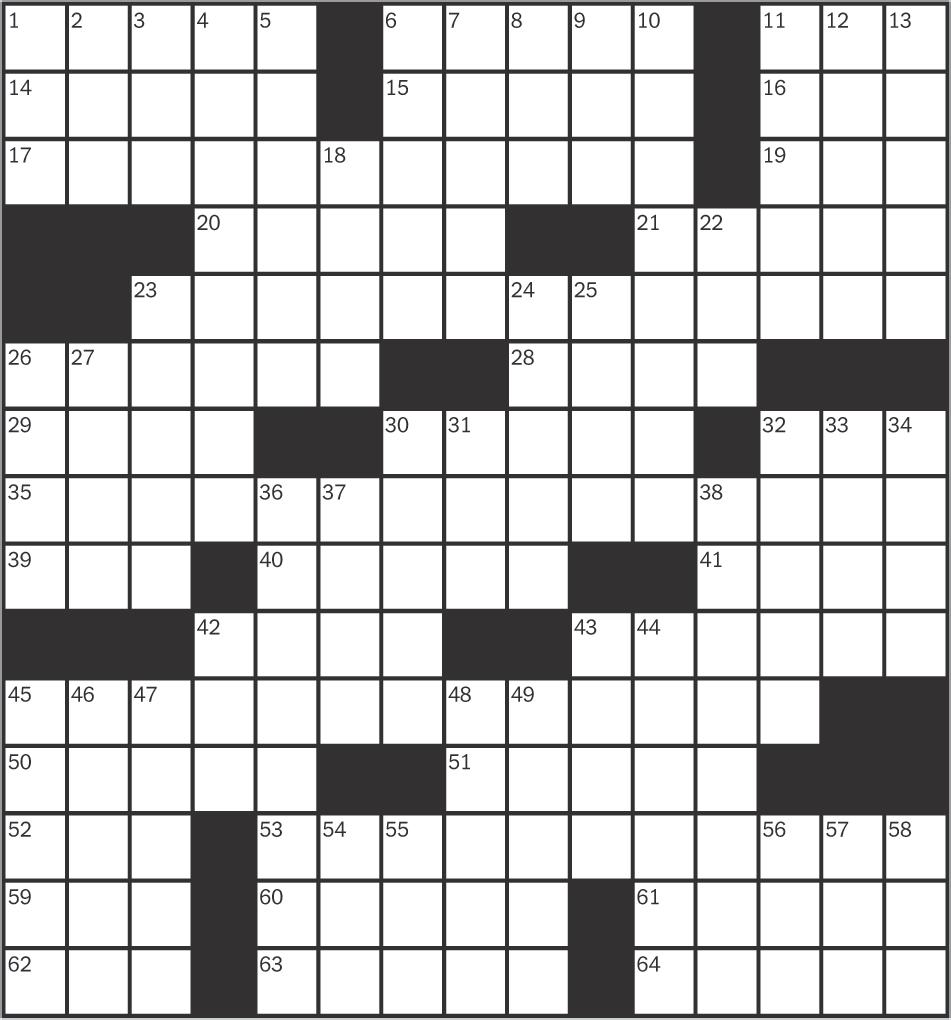
in funding from the federal go ernment but will make e ceptions for elds with historically cheaper research, like history or English. or researchers like rian kdale, a pro fessor in the School of ournalism and Mass Communications, the grant oppor tunity will mean new hope after federal funding shifts. n spring 2024, the 1.7 million research grant for his study on how social media can impact national security was pulled away. he funding agency, the Miner a esearch ro ect, o erseen by the .S. epartment of efense, had been discon tinued and brought all its grants down with it. hen the decision came, it was disap pointing and disorienting, kdale said. he new grant opportunity allows him to be forward thinking, seeing opportu nity for continuing his work rather than putting it away for good. his opportunity for the ro ost Office is appealing to folks like myself that might ha e to recalibrate a bit of what they were doing to adapt to the new funding land
scape, kdale said. As the go ernment shutdown stalls fed eral operations, kdale said he belie es it largely puts researchers on standby with their pro ects.
“Usually when there are shutdowns, it doesn t necessarily mean researchers who are funded ha e to discontinue their work, he said. t does mean some of the back end communication and accounting and logistics become more challenging.
n kdale s e perience, pre ious go ern ment shutdowns entailed a waiting game. rant re iew processes were e tended due to an absence in staff.
Aaron line, director of the ice pres ident s esearch e elopment Office at the , clari ed the goal of the opportu nity is to promote research prolonging and impro ing the uality of life of owans.
“It has nothing to do with the current funding landscape and the national research funding, he said. his is really about allowing our researchers to collect that pilot data to help them be more competiti e when they do go after that funding.
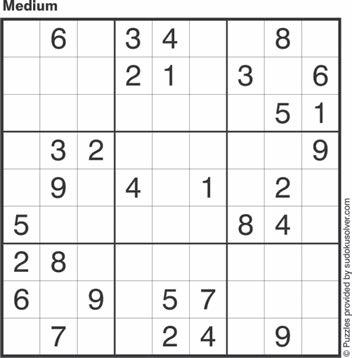

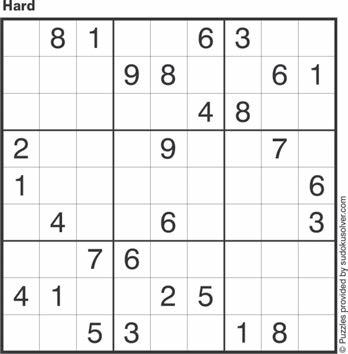
ALL EYES ON IOWA

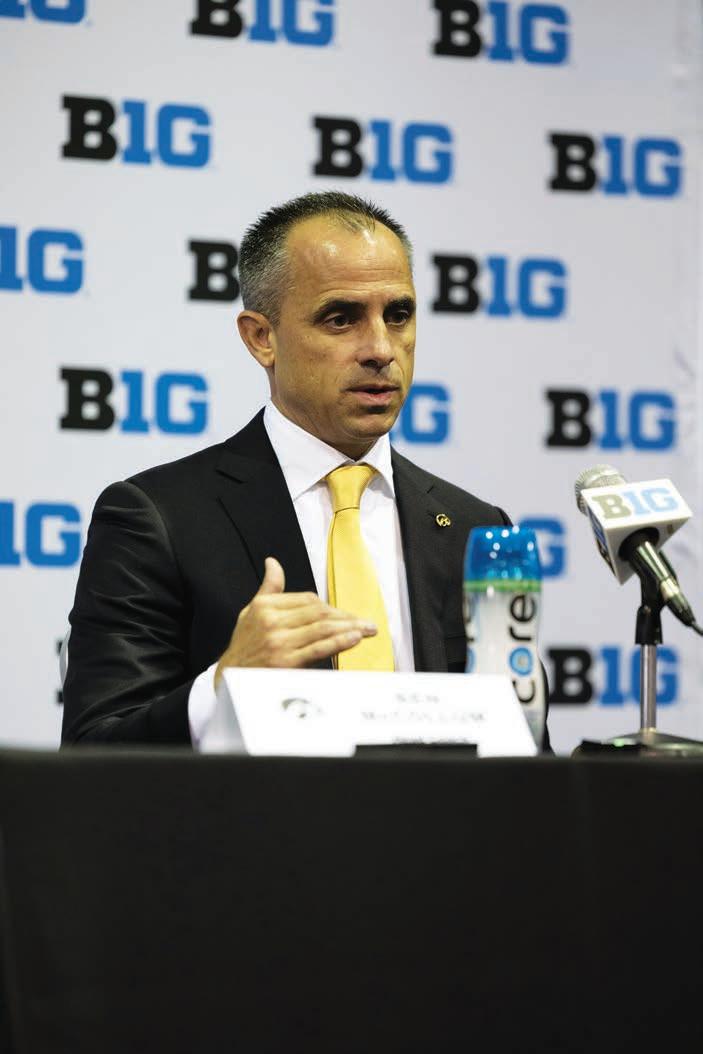
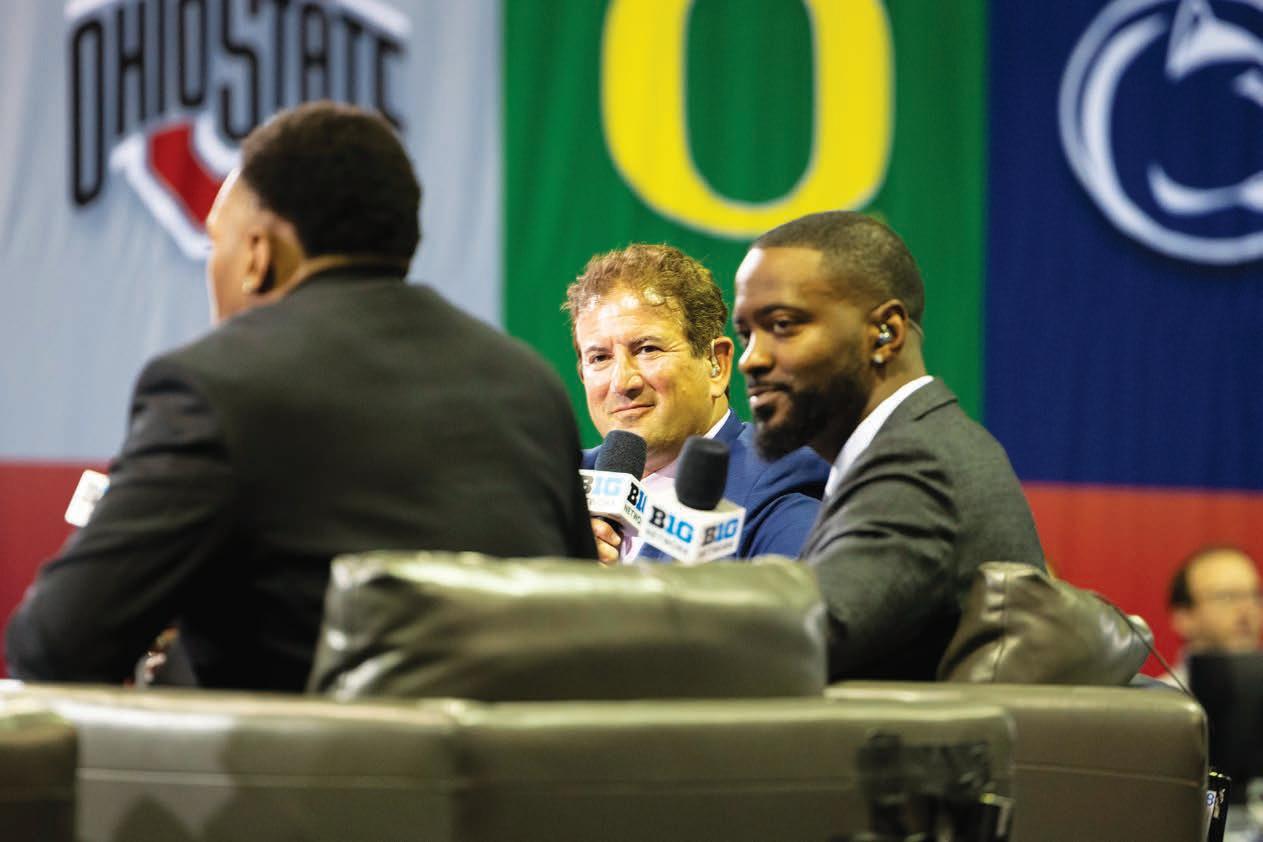

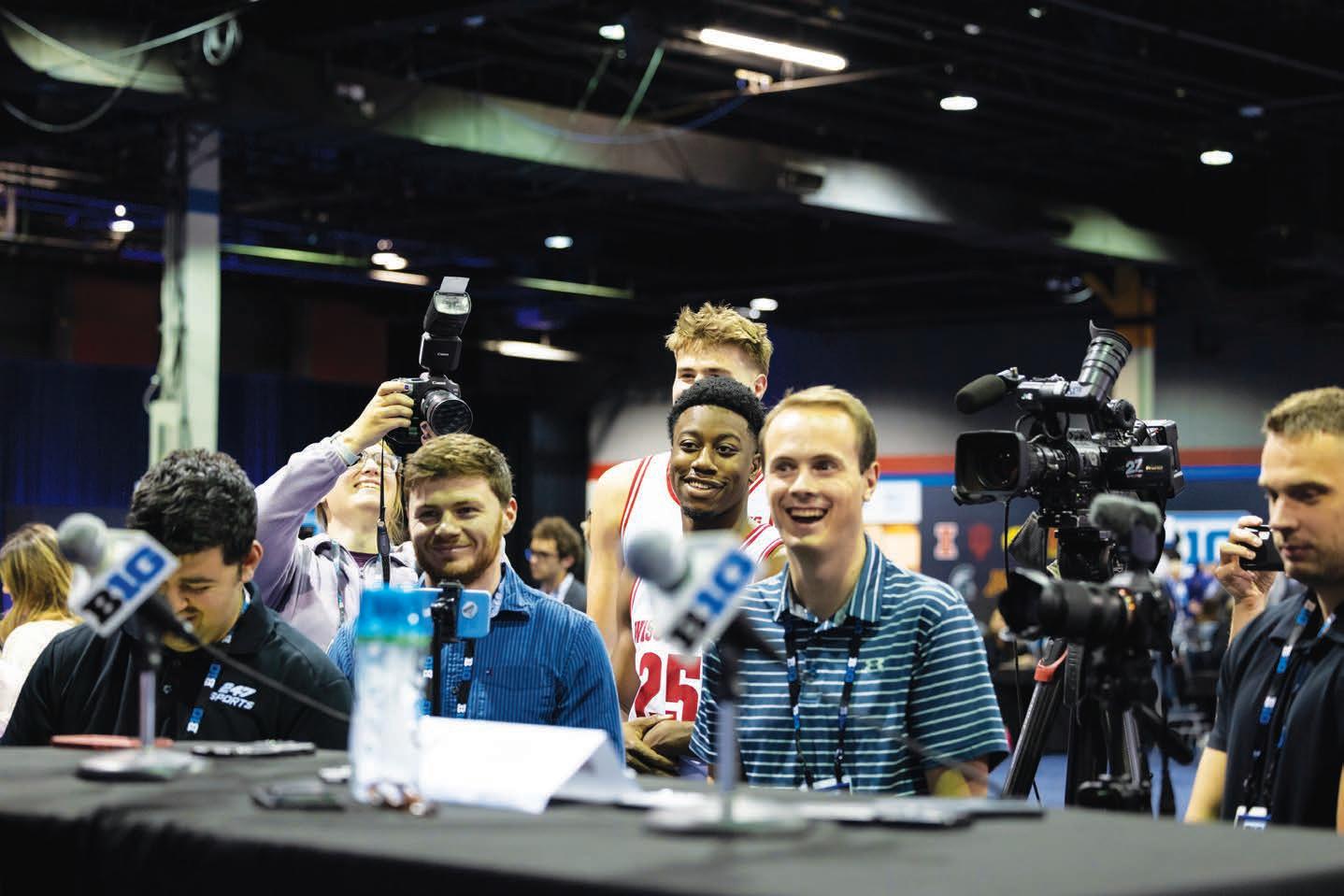


SPORTS Brotherhood on the pitch
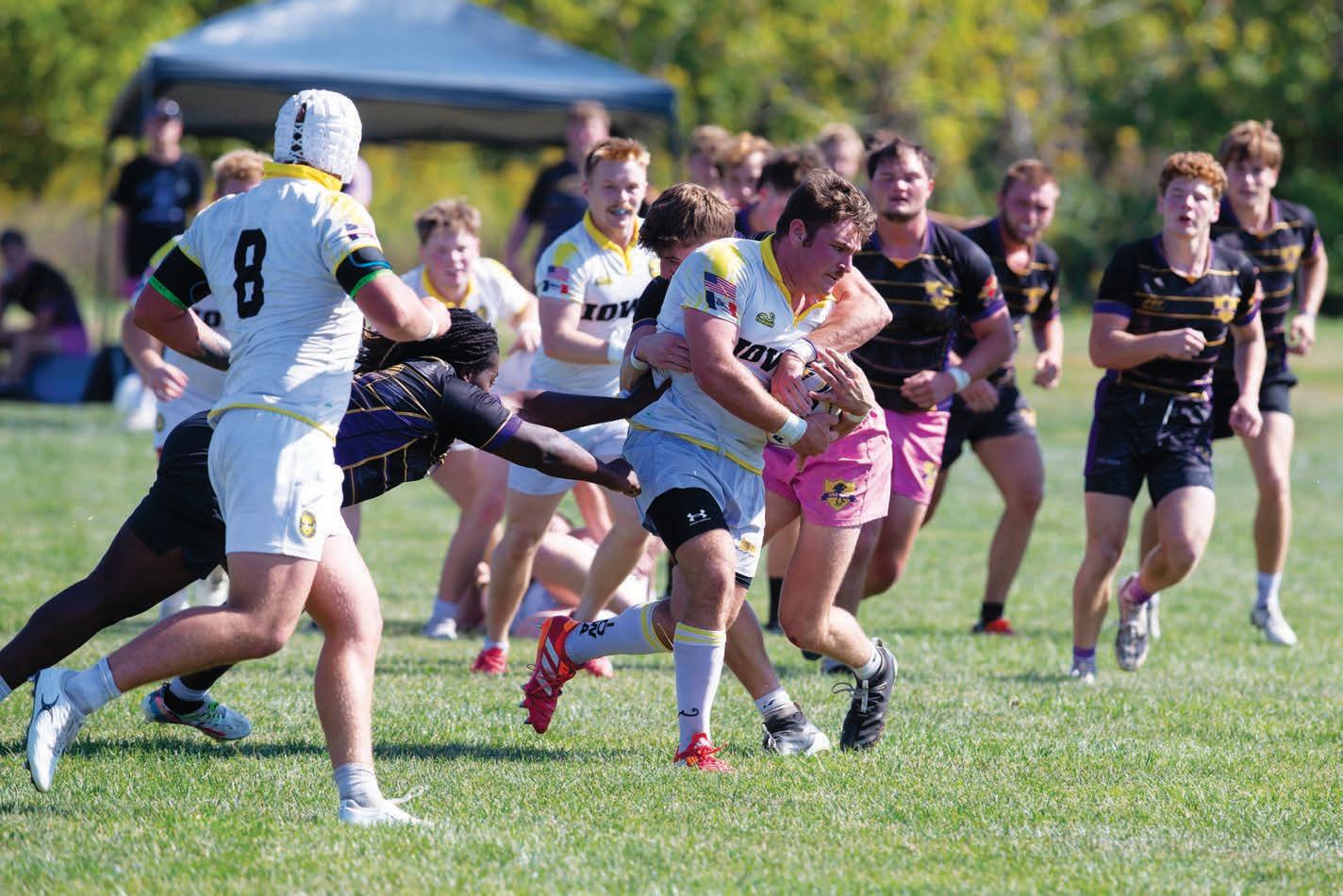
to rugby,” Francis said. “And it’s usually people who are ery t and ery outgoing. There aren’t many quiet people.”
In a state where sports like football, wrestling, and basketball reign supreme, an informal meeting in 1966 on the University of Iowa’s campus established a new yet classic sport from across the Atlantic — rugby.
Rugby, an often physically demanding sport, originated in England in 1823. The sport involves 15 or seven players on each side and is divided into two 40-minute halves, with each team trying to score as many points as possible in the allotted time.
ugby took off in countries such as England, Australia, and South Africa, but the sport struggled to gain the same traction in the U.S. In Iowa, however, Peter Francis found an early love.
Born in northeast England, Francis learned to lo e the game after his rst game of rugby at the age of 11 in 1949. He starred on the pitch at Kings College in Newcastle and Carnegie College in Leeds. Francis learned to enjoy the physicality and camaraderie of rugby.
“There’s kind of a type that is attracted
In rugby, the enduring physicality and vulnerability in the match require players to have the utmost trust in each other. The focus on teamwork appealed to Francis, who enrolled at Iowa as a graduate student studying physical education.
On campus, Francis saw an ad in The Daily Iowan calling for anyone interested in joining a club. The ad read, “For men of all assorted sizes who like to knock around and keep in shape in a socially acceptable manner.”
Seeing an opportunity for growth, Francis felt it was his calling to take the initial step in bringing a somewhat foreign sport to the Midwest.
“There was a nucleus of people from rugby-playing countries here at Iowa,” Francis said. “Graduate students from New Zealand, England, Scotland, and Ireland were all interested.” Eventually, Francis, alongside likeminded rugby enthusiasts, made up the rst brigade of the owa men s rugby club in 1966. Francis played the scrum-half position, which receives or throws the ball into scrums, where eight players on
each squad line up against one another.
In its inaugural season, Iowa won all four of its matches and outscored its opponents, 77-17.
Now, over 60 years later, current head coach Tyler Dailey gives credit to founding members like Francis who laid the groundwork for the club. Now in his eighth year of coaching, Dailey stuck with Hawkeye rugby through its ups and downs.
he rst year, we started with only 1 players and went 4-3,” Dailey said. “The team hadn’t won a 15 [player] match in four years before that, so it was a pretty successful rst year.
ith the promising rst season, ailey saw an increase to 45 players in his second season at the helm. The squad reached up to 65 players just prior to the COVID-19 pandemic. Dailey said the team was 6-1 in 15-man competition and undefeated in the seven-man version at time.
Dailey said with the interruption of COVID-19, the team was not allowed to compete due to university restrictions and guidelines.
“Players were forced to practice without making contact with each other while also having to wear masks,” Dailey said. “It
Fourth-year Shannyn Vogler enters final year grateful for all the memories
A member of the Iowa women’s golf program for four years, Vogler looks to finish her final season strong.

Chicago on TV and that sparked my interest,” she said.
5 years old and decided she wanted it to be her future around age 10.
“I remember watching the NCAA championships in
Although Bettendorf is not very far from Iowa City, Vogler said she did not particularly want to come to the University of Iowa to play golf at the time. It wasn’t until she met Iowa head coach Megan Menzel that she started to consider playing collegiate golf for the Hawkeyes.
was incredibly difficult to organi e and maintain our high standards.”
Dailey also noted the club saw a drop in enrollment during this time, as players witnessed other rugby athletes across the state participate without the same restrictions. Dailey said there was a dip in team culture and morale during this time as well.
Despite the challenges, Dailey believes this year’s squad has the program back to where it was pre-COVID-19.
“It took a lot of sleepless nights and sacrifices, but I couldn’t be more proud of the direction this program is headed today,” Dailey said.
The Hawkeyes currently compete in the Heart of America Conference within the College Rugby Association of America. The association is divided between a men’s and women’s league, with the men’s side featuring Division IA and AA teams. Iowa, Nebraska, Minnesota, Iowa State, and eight other schools make up the midwestern conference. The Hawkeyes are 5-0 on the young season and sit at No. 4 in the most recent Division I rankings. Iowa has outscored its opponents, 255-
Niamh de Jong’s quiet impact
De Jong may not have scored yet, but she ranks fourth in minutes played.

When it comes to the Iowa field hockey program, fans will note the goals, the fresh young talent, or head coach Lisa Cellucci. But from the multiple new players on the roster, one player is slowly working under the radar.
First-year Niamh de Jong has yet to score a goal this season but has the fourth most minutes played on the team. Her recruitment was a last-minute addition for the De Jong came to Iowa’s attention near the end of their recruiting time frame. After viewing her film clips, Cellucci and the coaching staff quickly tried to reach out to promote Iowa to de Jong, hoping she would decide to come play for the Hawkeyes.
After some chats with associate head coach Michael Boal and Cellucci, de Jong agreed to come and visit the University of Iowa with her father, knowing this could be the opportunity she’s been waiting for.
“I knew I wanted to come to the U.S. and study and play field hockey but didn’t know quite where to go,” de Jong said. “After talking with Michael, I was really intrigued, and after the visit, I decided Iowa was where I wanted to be.”
From the first day of preseason, de Jong started not only getting comfortable with the team and Iowa’s everchanging weather but also showing the coaching staff what she adds to the team.
“She was very fit, which told us she will have good endurance,” Cellucci said. “She also has played at a really high level, giving her a great tactical understanding, especially as a freshman.”
Such a high level of experience dates back to playing for U18 teams back home in Brisbane, Australia.
Return to sender
Iowa volleyball utilizes blocking skills to decide games.
2025 campaign, spurred on by an explosive 6-0 start.
Iowa volleyball has improved in many ways in 2025 after a frustrating 2024 campaign.
Setter Claire Anmeraal returned to peak performance, providing a reliable sixth arm for the team after last year’s injury. Fourth-year Milana “Mo” Moisio transferred from Miami to round out a muchneeded libero role after the departure of last year’s Joy Galles. Newcomers ranging from rst year Carmel ares to si th year Chard’e Vanzandt racked up high kill numbers to up the
“We’ve got some new players in our system, but we’re very talented,” Barnes said. “Team blocking has been one of our strengths, especially when we win games.”
Much of Iowa’s success in the center comes from their middle hitters, namely second-year Aleksandra Stojanovic and thirdyear Hannah Whittingstall.
“Blocking is about giving opportunities — open up spots for the defense to get a good dig off of a hitter,” Whittingstall said. “It also is a big momentum creator. When you get a big block or a good touch
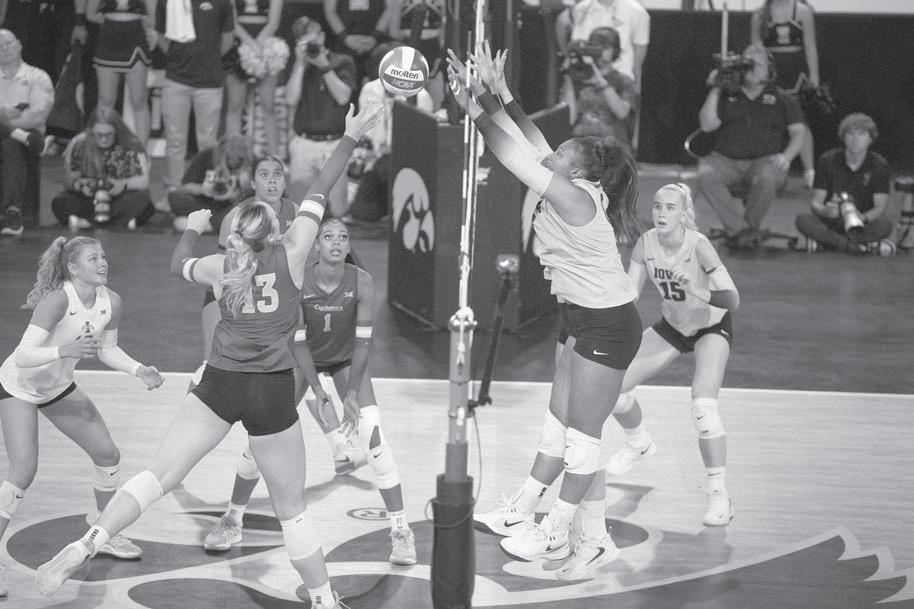
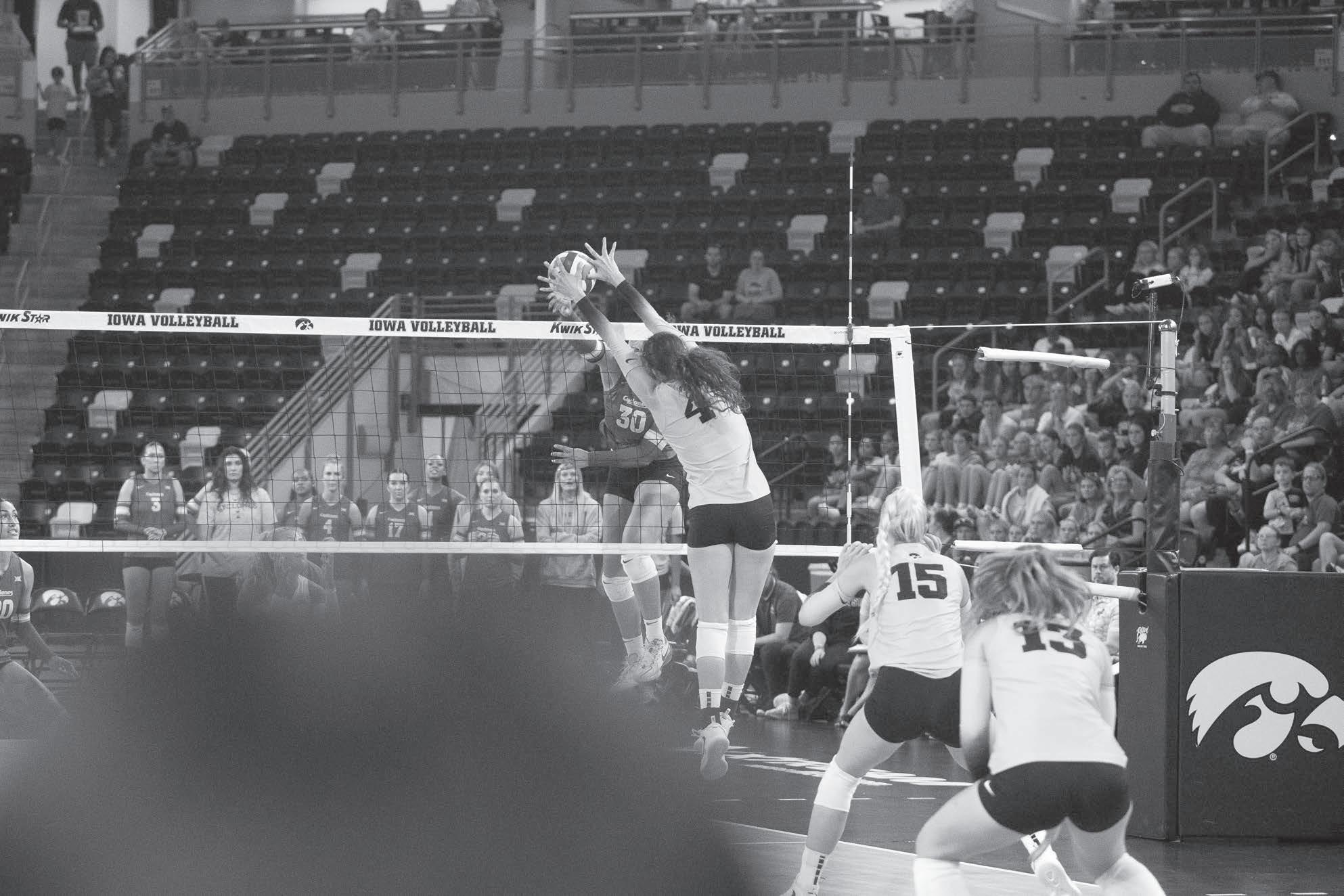
Daniel Portz: I actually really wanted to play football at Iowa. But then I wanted to be in the military for the longest time, but I realized I didn’t feel cut out for that. So now I’m hoping for anything with my finance degree.
What’s your all-time favorite movie series? Star Wars. Without a question. Original Trilogy.
What’s your dream podcast guest rotation?
I’d love to talk to a retired veteran from World War II. I have no one specific in mind, but I really appreciate what they do, and the history amazes me. I’d love to talk to Kirk Ferentz, head football coach at Iowa. And maybe Lady Gaga, my favorite female artist of all time.
What’s your go-to Iowa City restaurant? Easily has to be Big Grove Brewery. It has a
American cuisine.
If you had to pick one sport to go professional in, what would it be and why?
Football for sure.
What holiday do you feel is underrated?
Thanksgiving. I feel like Easter, Christmas, and Halloween are wonderful. But Thanksgiving has great food, and fall football. It’s the best time of year, no doubt.
Which wrestling team will have a be er season?
Sports reporter Jackson Miller argues for women’s, while

I know it’s hard to follow up on winning a national championship, but the Hawkeye women have done that already. The program started in 2023 and has been dominant from the start, winning back-to-back national championships. Beginning this season, women’s wrestling is now an NCAA Championship sport. The competition might not seem great when Iowa is facing small schools like Colorado Mesa or North Central, but the talent is still there.
belie e with full con dence the Hawkeyes will be hoisting the national championship trophy at Xtream Arena in Coralville again this year.
Head coach Clarissa Chun is bringing back plenty of talent, with 11 of 15 202425 All-Americans returning this year.
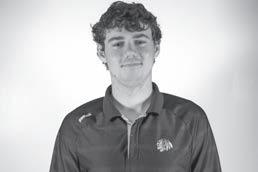
Iowa returns two undefeated national champions from last year, too. Olympic and World medalist Kennedy Blades and two-time national champion Kylie Welker provide a lethal one-two punch at 160 and 180 pounds, respectively.
The Hawkeyes also have plenty of talent waiting to climb the ranks to a starting position. Second-years Rianne Murphy and Val Solorio provide a huge advantage after solid rst year seasons last year. Murphy finished with a 32-4 record and was an All American after nishing third in the NCWWC National Championships at 103 pounds, and Solorio posted a 23-9 record last season.
The combination of returning veterans and young talent climbing the depth chart will likely lead to another national championship for the Hawkeyes.
Men’s wrestling will have a better season this year. The Hawkeyes look to build on an impressive 14-1 run last season, with new and returning talent stepping up to lead the charge. Returning to action are program veterans like Drake Ayala, last year’s Big Ten and NCAA runner-up at 133, who also boasted a 12-3 record against ranked opponents. Ayala is joined by 5-foot-8 powerhouse Michael Caliendo who, at 165 pounds, is 52-9 overall in just two seasons with Iowa. The best part? These are just two members of the Hawkeyes’ 32-man roster. Iowa has four first-years rounding out a promising group of newcomers this year.
Leister Bowling IV joins the program with two state titles from a monumental high school career in Longmont, Colorado, while Ty Miller contributes
a state champion and state runner-up title from his nal two seasons in orth Olmstead, Ohio.
Iowa women’s wrestling obviously had a more successful season last year, sporting a perfect 19-0 record and capturing a national title within e years of its conception, but that doesn’t guarantee immediate success this year. In fact, with men’s wrestling facing a gauntlet of tougher opponents, such as Penn State and Nebraska — the latter now in possession of AJ Ferrari — the Hawkeye men have more chances to make a bigger name for themselves.
I cannot overstate how dangerous it is to rely on last season’s results when making a decision between these two teams. In fact, the graduation of program veterans Nanea Estrella and Macey Kilty actually makes this season more of an uphill battle for women’s wrestling, while the men’s program returns the aforementioned Ayala, Caliendo, and many others. Any slight improvement on last season could easily pave the way to a men’s national title and even more postseason accolades. The women are working with more from last season, but the men have more room for growth and the right team to do it. Expect them to make a massive run.
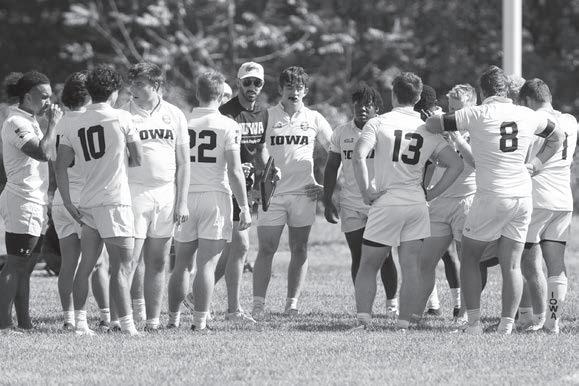
67, this season. Dailey has seen rsthand how owa rugby has progressed o er the years.
Our guys are really tight knit, ailey said. hey re always doing things together outside of the pitch as much as on the pitch. hey re out here working hard all the time, so it s really been fun to see the fruits of their labor.
ourth year en eimer plays the y half position, which is essentially the same role as a point guard in basketball. eimer directs the offensi e attack, setting the pace with his passing decisions. A team captain, eimer said part of owa s recent success is due to a shift in team culture and identity.
he amount of first
Iowa men’s wrestling needs to lean on transfers
Four transfers will likely crack the starting lineup in 2025-26 for the Hawkeyes.

lean hea ily on them.
owa men s wrestling was dominant last season, nishing with a 14 1 dual record and only losing to e entual national champion enn State.
he awkeyes defeated multiple highly ranked teams, including o. 4 Ohio State and o. 2 Oklahoma State, and concluded the 2024 2 season as the o. 2 ranked team in the country.
f owa wants to replicate its success in 2024, it needs to lean on its transfers. he awkeyes brought in multiple high end wrestlers from across the country, and they all can pro ide some reworks this season.
erhaps the biggest transfers owa landed this offseason were ordan illiams and asir ailey, both from ittle ock, Arkansas.
illiams wrestled at Oklahoma State before transferring to ittle ock last season. illiams was the ig 12 runner up in 202 24 with the Cowboys and uali ed for the CAA Championships.
illiams followed up that success in 2024 2 at ittle ock, winning the ac 12 championship at 14 pounds and again ualifying for the CAA Championships.
ailey finished fourth at the CAA Championships and was named an All American in 202 24 at ittle ock. ast season, ailey ualified for the CAA Championships and won his second consecuti e ac 12 championship at 1 pounds.
ailey and illiams are listed at 141 and 1 7 pounds, respecti ely, for the
Another big transfer owa landed was Massoma ndene, a three time i ision ational Champion at artburg College. he si th year was also a two time CAA All American with owa akes Community College from 2020 2022.
ndene now has a chance to pro e himself at the biggest stage of college wrestling and will replace owa s only national champion from last season, Stephen uchanan, at 1 7 pounds.
hile ndene has big shoes to ll, his e perience and success at the le el will lead to him becoming one of the best wrestlers in his weight class this season.
he nal transfer who should ha e a big impact this season is ean eterson. eterson, a transfer from utgers, nished top 10 in the ig en in three consecuti e seasons and is a three time CAA Championships uali er.
years and ust the culture of trying to win and make it to the national stage is the biggest change, he said. efore, could not e en imagine guys taking it as seriously as we do now. ut thanks to Coach ailey, we all kind of started thinking about things differently. eimer, in his second year for the awkeyes, understands that e eryone on the team has a oice, e en if not on the eld. he bond and fellowship owa rugby players ha e on the eld is more than pre alent, and for club president aniel ort , the camaraderie should not come as a surprise.
Managing the team on behalf of the uni ersity, a big part is maintaining culture and ust fostering
essentially a brotherhood, he said. uys who want to come out here, compete, and grow together that s the most beautiful part of my ob.
As the behind the scenes man, ort has played an instrumental role in ensuring the awkeye rugby brotherhood continues to progress and not take any steps back. he brotherhood was on full display on Oct. 4 with fans, alumni, and spectators alike lining the owa sideline in support of the team. our tents were lled to the brim with awkeye fans catching up with one another. Multiple fans shirts read Saturdays are for ugby. Multiple past players showed up in support of the
After seeing what the campus had to offer and what the athletics could do for my career, it really helped me make my decision, ogler said.
n her last season of eligibility, ogler s ourney in the black and gold is drawing to a close. uring her time at owa, ogler e perienced a ariety of things, including seeing Caitlin Clark play at Car er awkeye Arena. he game of golf is one of the most mentally challenging sports, which has caused ogler to grow not ust on the course but off the course as well, she said.
e found who am more emotionally during my time here, ogler said. here s been highs and lows, and that s helped me figure out who am as a leader. ust ha e o erall matured as a person.
eing a part of the owa women s golf team brings a lot of different memories, but for ogler, it is the time spent with her teammates she will remember the most.
he an rides to tournaments are always so memorable because we ha e a lot of laughs, ogler said. Ob iously the good shots and tournaments will stick with me, but o erall , m ust going to remember the good times e had
team laughing, catching up, and reminiscing on old memories on the pitch. Some former players were e en planning a future get together in the upcoming months. he future of owa rugby was once uncertain, but today its identity of family hasn t been stronger. rancis, in attendance, soaked it all in as he watched what was once a small organi ation turn into a big rugby family. rancis felt a wa e of gratitude at the match, witnessing firsthand his long awaited dream for rugby, a once foreign sport of the 1 th century. ere we are, he said pridefully. he spectacle that started o er 200 years ago.
with my teammates. he awkeyes are coming off their second consecuti e win at the iane homason n itational, which they host at inkbine olf Course. or ogler, this was her final competition at inkbine and was the last time a tournament was played on the course before reno ations. was talking to my teammates and said, sn t it weird if you e er come back here it won t be the same course ogler said. t will be fun to ha e a memory of ha ing to walk up the hill on hole 1 and hating it.
As ogler s final season as a awkeye comes to an end, she said her teammates will be the thing she misses the most once it is all said and done. ll always be able to play in a golf tournament but can t always be around my teammates, ogler said. hether you re ha ing a good day or bad day it s always fun to be around them and that is what e been reflecting on these past few months.
owa still has a lot of golf left on the schedule as the awkeyes look to finish ogler s senior season on a high note with the se en remaining meets left in the season. he women s golf team will tra el ne t to est oint, Mississippi, to compete in he Ally from Oct. 20 to Oct. 22.
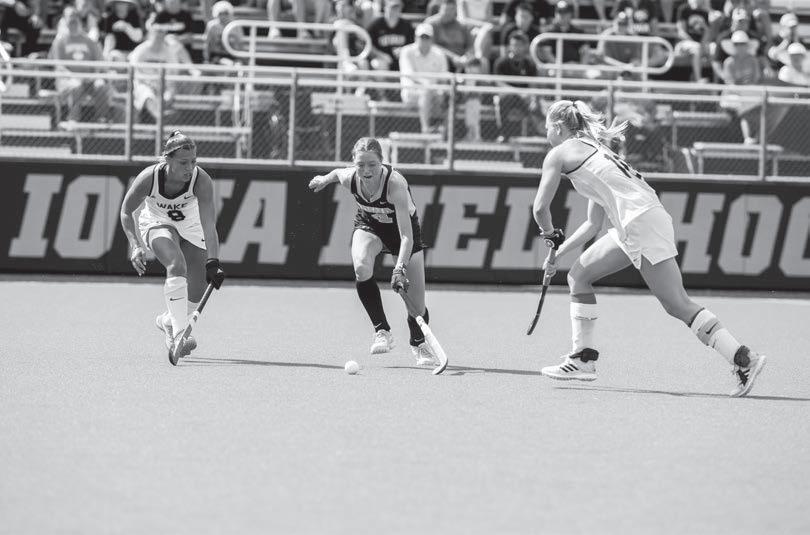
he 12 pound weight class lacked consistency last season, with third year oey Cru notched as the starter in all but three dual meets in 2024 2 . Cru nished with a 1 14 o erall record.
eterson now brings more consistency at 12 pounds for the awkeyes. hile he might not be a world breaker, he will gi e owa a solid chance at the 12 pound weight class in nearly e ery matchup this season.
All four of these transfers will be the dri ing force of this owa team. erybody already knows what the awkeyes ha e at the other weight classes, with wrestlers such as rake Ayala, Michael Caliendo, and Angelo errari already pro ing themsel es last year.

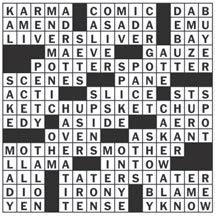
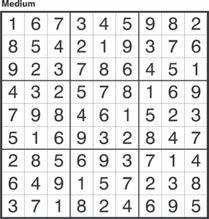
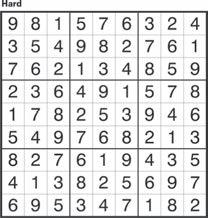
She helped her s uad win an indoor national championship and was captain on the unior team at the ni ersity of ueensland. ut playing was one thing to deal with being far from home was another. or de ong and many of the other players, the challenge of playing abroad was a common one. ot one player on the roster is from owa and o er half are from o erseas countries, like de ong. e all like to talk about how e eryone grew up and what it is like back home for all of us, fourth year Milly Short, who hails from orcester, ngland, said. Sharing our e periences and differences brings us all together as a team and helps cure that homesick mindset. ow in the midst of conference play, de ong is more comfortable and con icted in her role on the team. Cellucci noted
her great personality makes her friendly with her teammates. or de ong, forming chemistry with her teammates in ol es precise passing on the field, a goal she s constantly working toward. She hopes her aerial passing can impro e to the le el of Short.
ha e great ision o er the ball and really try to make sure where my passes are going, de ong said. his season so far has been one the coaching staff as well as de ong can look back on for her future de elopment. lentiful minutes on the field featured a few high intensity situations, yet the coaching staff are happy with how de ong has benefited the team. e would like to see her work on her e ecution under e treme pressure, making sure she e ecutes as cleanly as possible, including seeing her build her strength still this season and o er the off season for ne t year, Cellucci said.








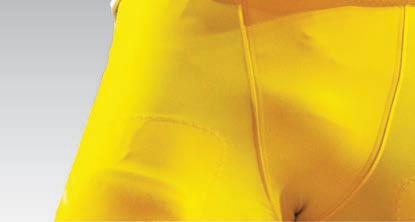

BADGER BEATDOWN




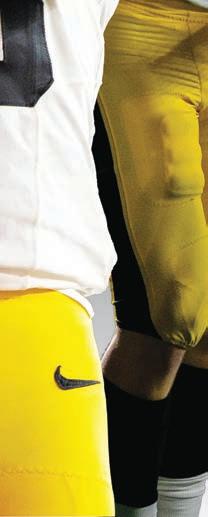











Iowa defeated Wisconsin, 37-0, on Oct. 11 to hold onto the Heartland Trophy. The Hawkeyes’ defense played a key factor in the victory, marking the first time since 1929 they have shut out the Badgers at Camp Randall Stadium.
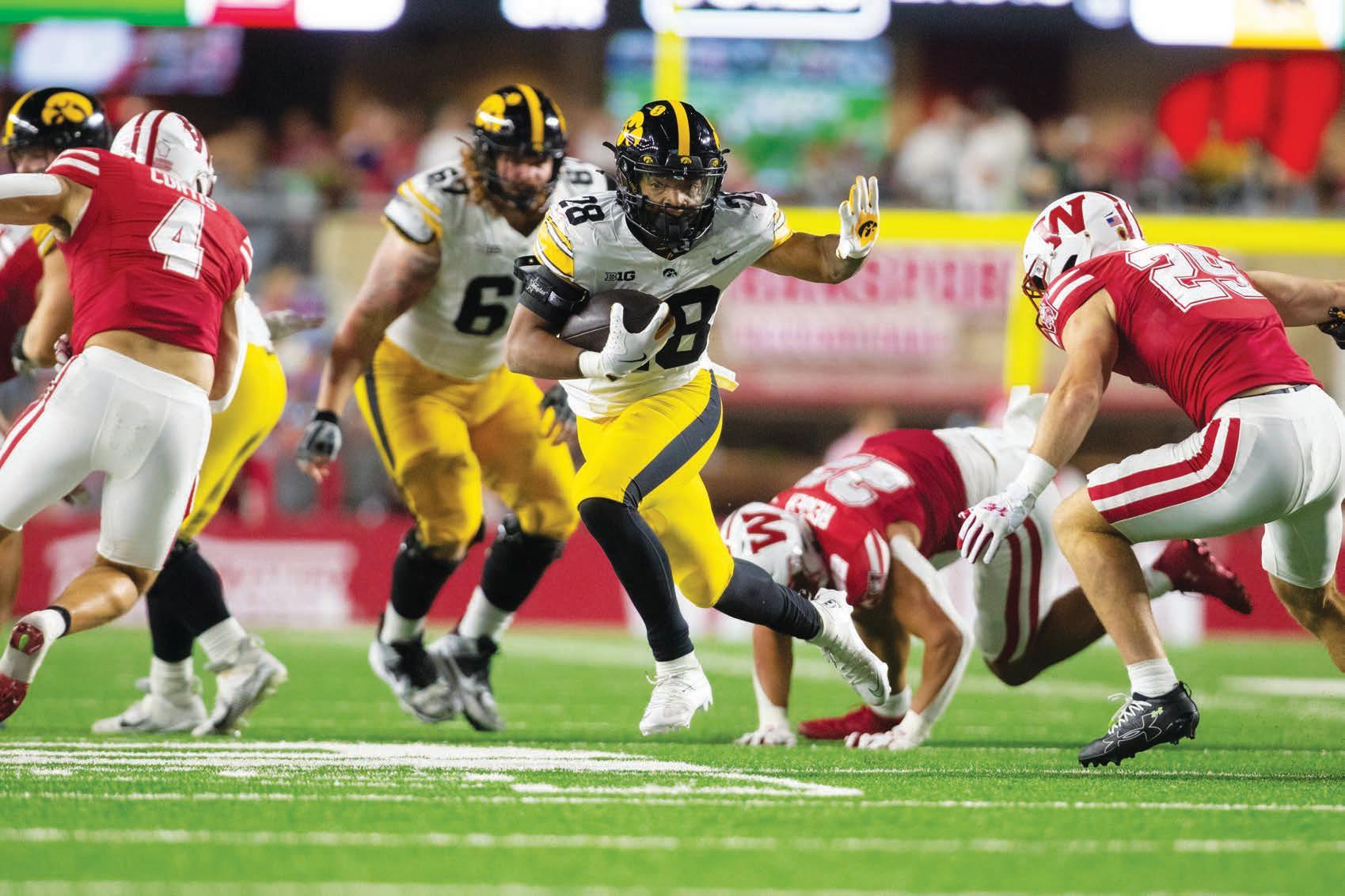
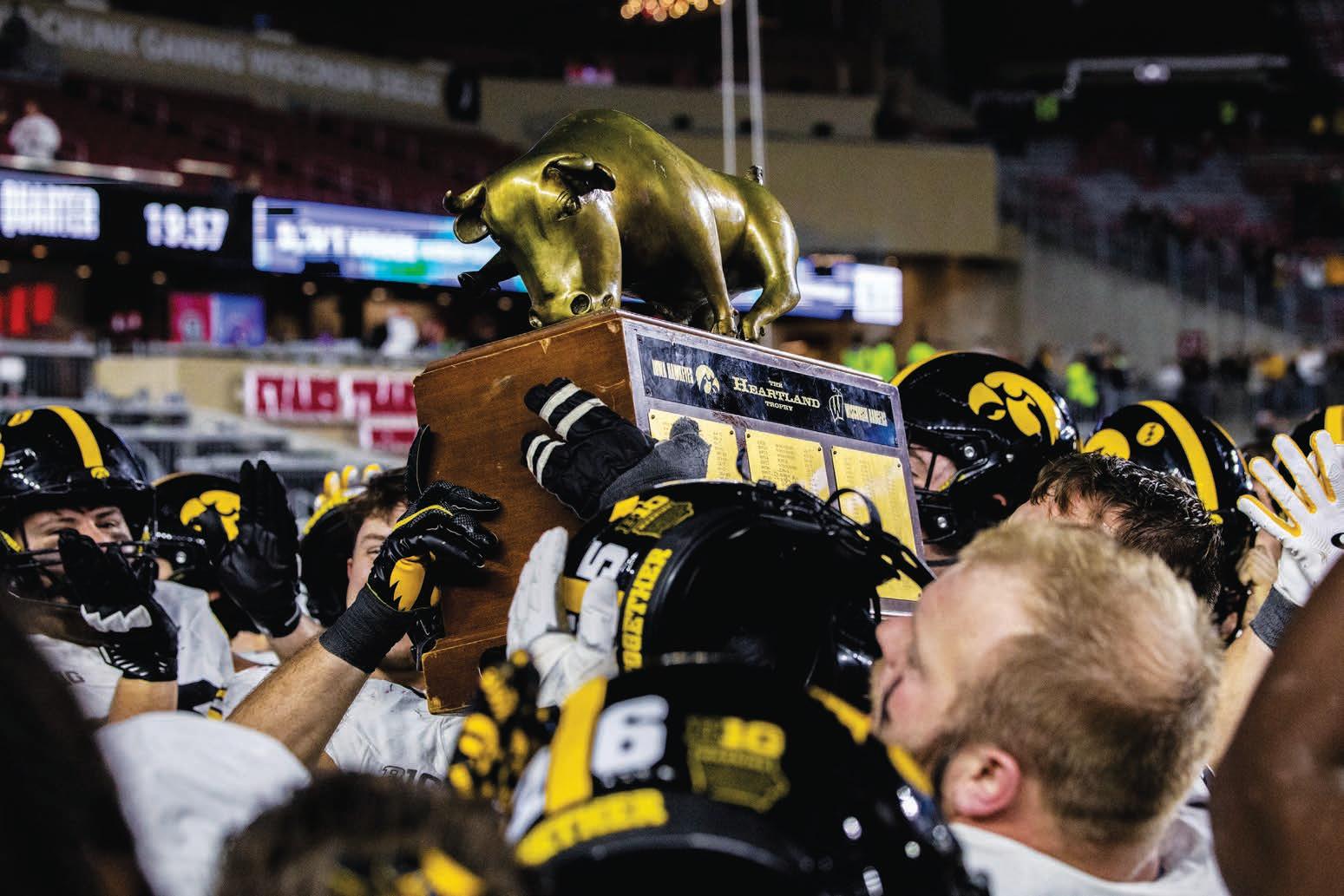
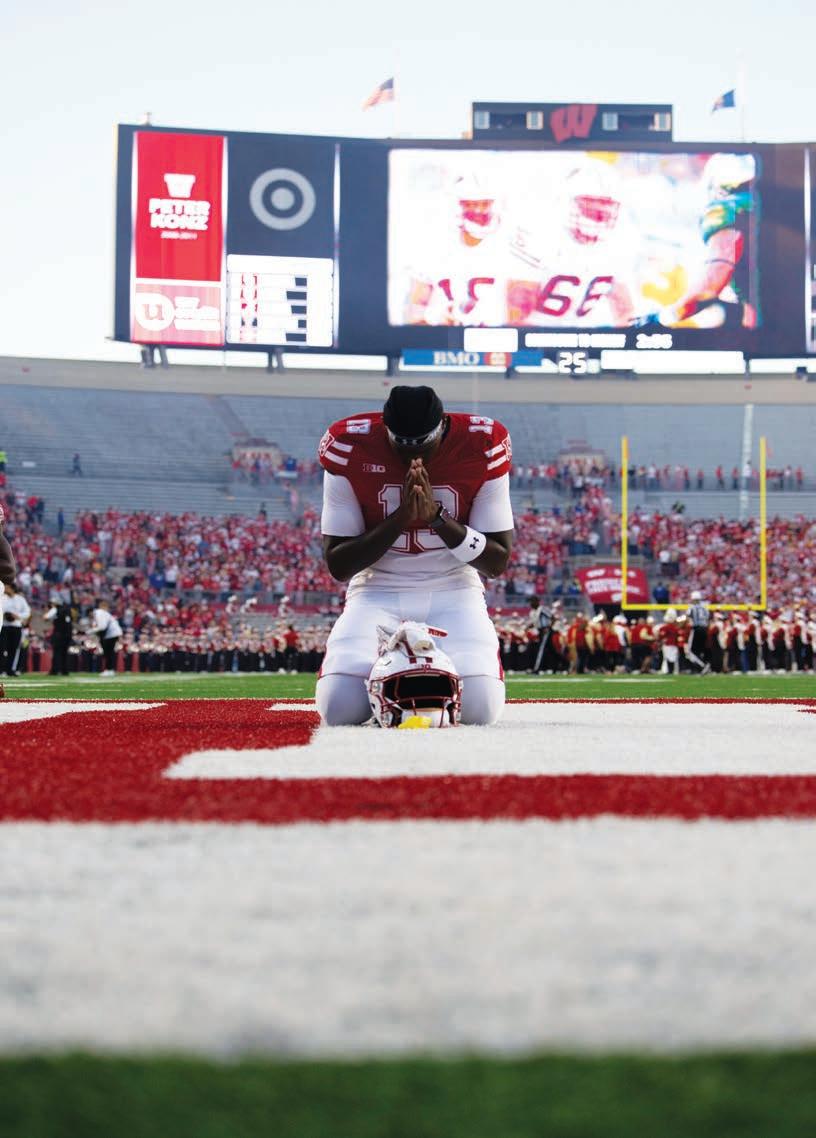








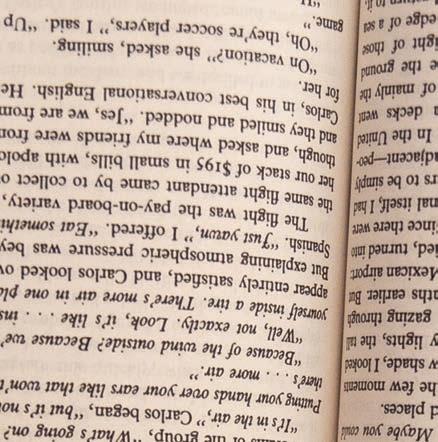



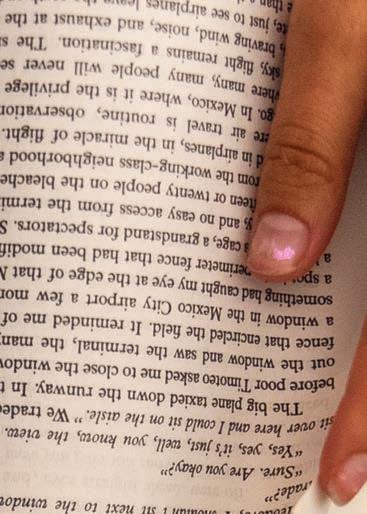










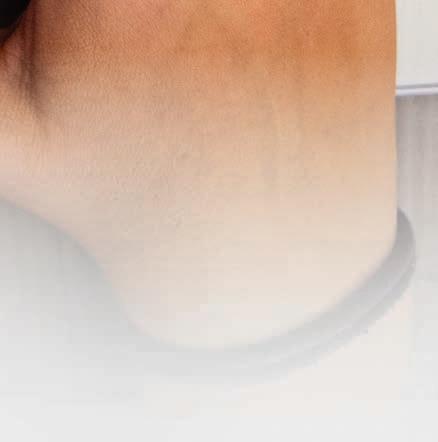


Henry D’Souza, a fourth-year education student at the University of Iowa, has been working toward becoming a teacher since the beginning of college. But a new factor entered his studies not present four years ago.
For decades, generative AI tools have been implemented across elds. hether used to initiate attacks from an enemy character in a video game, in medical screenings to help with a diagnosis, or to pilot a war drone, A has already in ltrated the li es of e eryday people.


Generative AI can, as the name suggests, create an email, image, or website in a matter of seconds by scraping the web and combining useful information to create the prompted item D’Souza has witnessed an increased use of generative AI throughout his university career, including one professor asking students to use AI to show them how unreliable it is. D’Souza agreed with the experiment, while also recognizing the tools could have their uses, like to bridge the gap between learning for some disabled students.


Behind the seams of Dance Gala
UI Costume Shop transforms sketches and fabrics into unique costumes.
elchen insight into the intention behind the piece and helps with brainstorming how to isually translate for both the audi ence and the dancers.
y stitch, shade, sketch, and swatch, the ni ersity of owa s Costume Shop works around the clock to create costumes for the annual Dance Gala.
ance ala, which dates back to 1 1, showcases a ariety of student dancers and faculty choreographers.
This year's performances take place on Oct. 17 and 1 , featuring e differ ent dances, all varying in cast, theme, and costume.
According to enn ray, a isiting assistant professor for the s ance Department, costumes are the first image the audience takes in when the curtain goes up, making them essential to the performance.
ith this in mind, the work of the designers who create the 40 costumes it takes to help run s ance ala becomes high stakes.
he answer lies within the trio of enny utting elchen, Cindy ubu, and ren dan udgeon, who together transform sketches into garments balancing functionality with intrigue.
elchen, along with ubu, works through the process in Hancher’s Costume Shop.
ery piece begins with a con ersation, Pray, a choreographer for Dance Gala, said. This in depth one-on-one conversation between isionary artists gi es
The costume designers also sit in on the different pieces, taking notes of the groupings, movement, and emotions the performance re eals, elchen said.
From there, the designers mock up mood boards, slideshows, and paper dolls, or illustrations of costumes and their fabrics, colors, and cuts to form a concept.
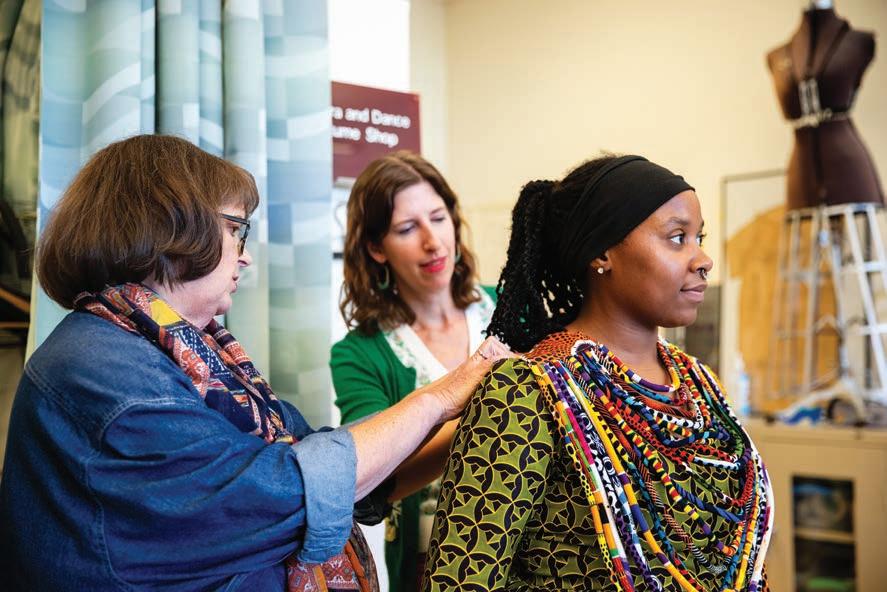
Once designs are outlined, the costume shop doubles as a construction site where elchen, ubu, and udgeon get to work.
he rst step is nding fabrics and cloth ing items to t the choreographer s ision, elchen said.
o nd such speci c fabrics, ubu said, they call e ery fabric supplier they know.
Once done, the fabrics are secured, and construction begins.
The amount of time it takes to create a costume depends on the choreographer’s vision.
he risha rown ance Company piece, for e ample, took longer than some of the other pieces because it is a remake of a 1 0s piece.
More fabric re uires more sewing, which tacks on more time. Other cos tumes with simpler cuts and fabrics re uire less manual labor.
hile creating the costumes, elchen emphasi ed the importance of function ality, allowing functionality and design to e ist on the same plane.
Hunting for AI in online art
UI students and faculty debate the place of AI in art.
With the increasing development of articial intelligence software and the growing popularity of AI-generated art surfacing online, the online art community has been facing backlash. Comment sections on artists social media posts can be lled with scrutiny and debate over the usage of AI, as many people believe AI art is disgraceful.
t s not real art, rst year ni ersity of owa student lena risch said. For many artists online, gaining a following on social media is an important aspect of their career. owe er, with the in u of A allegations, artists are fearful of the possible repercussions posting their work online could bring.
e watched ideos on artists com menting on art drama on social media,” second year art student Mina guyen said. “People accused of AI art are bombarded with comments.
n her class Arti cial ntelligence and
Art rom i el to rint, which starts ne t semester, professor Anita ung plans to teach the ethics of using AI and investigate the controversial background of the tools. ung plans to utili e Can a and Adobe ire y to create uni ue and original art pieces in the class. he ethics of how A was de eloped are pretty egregious and de nitely infringed on a lot of creative copyrights and aesthetics, ung said. ow someone draws is like forging a signature, so forging a draw ing style is not a very creative thing to do.”
With these infringements on artists' uni ue styles and isual aesthetics, it is clear where the backlash against artists using A comes from. owe er, some peo ple on the internet have been taking this hunt for AI very seriously, leaving comments on countless videos.
An e ample of this is in the comment sections of TikTok or Instagram posts uploaded by primarily digital artists, such as ik ok creator artists. Some creators face scrutiny on everything they upload,
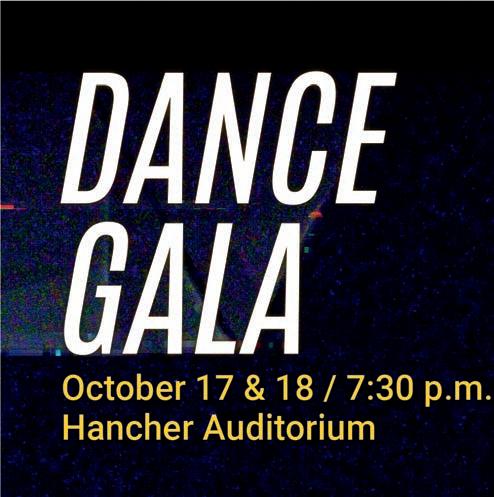
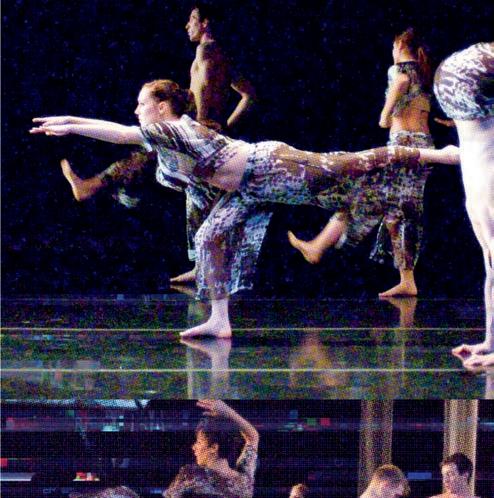



With the base costumes complete, the focus shifts from the sewing tables to the dressing room.
Gala dancers trickle into the costume shop for their rst ttings, which is e citing, mily yburn, one of the dancers cast in Dance Gala, said. or her, this is the stage where e ery thing starts to feel real. utting the costume on and nally get ting to dance in it is so transformative,” Pyburn said.
ith the hardest work done for the designers, the dancers enter tech week
either due to the uni ueness of their drawing process, the popularity of their art style, or ust because a piece looks too good” to have been done by a human. eople will take their time to e amine each piece of art posted, and people online will tear it apart to nd e idence because AI has been evolving and becoming harder to detect, guyen said. Most are shunned off their platform, like burning them at the stake.”
the week before opening night, where dancers run through the production on stage in costumes. f anything needs ing, elchen and ubu are on the spot to help with any last-minute alterations or emergencies. y the time opening night arri es, the work of the costume shop has ui etly transformed into part of the show s storytelling, allowing the audience to see months of creative conversation transformed on stage. For Pray, that transformation is what makes costuming such a ital part of dance.
“The costumes are a huge part of that story, ray said. hey indicate a world being built within the piece that s differ ent from the world the audience knows.
and them. hat s your ob, as an artist. he use of A to analy e and study art is something that ung encourages, along with artists using A to modify and e per iment with their own work more easily.
“It’s really easy to be suspicious and concerned about AI imaging programs as artists, ung said. es, it s going to take some obs away, but it s also going to provide other jobs. Technology is always going to be as bad as it is good, and vice versa.”
en though there is backlash in the media currently, ung said A will become a critical tool for a variety of artists. o artist know is ust going to punch in a prompt and be like, ‘Perfect, that’s e actly what wanted, ung said. see it more as a tool, like a sketchbook. You have to embrace making things that aren’t good,
Despite the dominance of AI tools across industries, many artists still critici e their use for any purpose, especially due to the loss of humanity in AI-generated images. It takes effort for art students to impro e their drawing skills, guyen said. i en how many wa es, mo e ments, and forms of e pression come with making art, it can take years. his e perience brings people together as many artists share the e perience and thus connect with each other s work, she said.
“Practicing art and improving your skill is something you can be proud of, guyen said. Sure, it ll take a long time, unlike A , but you feel proud of achieving something long term. ou can look back and see how much you’ve improved.”

Students’ heavy reliance on AI throws the effectiveness of modern education into question. With reading and skills already in decline in the U.S., per a report from The Nation’s Report Card on Jan. 29, AI in classrooms becomes a much more relevant worry.
“Reading comprehension across the country is at times lower than it should be, and I think people’s ability to communicate their ideas in writing is often less than it’s supposed to be,” D’Souza said. “Anyone, if given the proper attention, can learn these things. And it’s a matter of making sure they’re able to learn these things.”
As D’Souza notes, generative AI has rapidly expanded within the lives of UI students. Recently, Grammarly has been advertised as more of a generative AI company. Google, Meta, Microsoft, and X all have their own AI chatbot systems, and some apps even target directly to students.
“I feel like for a professor to have any pedagogical goal, they have to be against AI if they want their students to learn the content,” D’Souza said.
As an English major, UI third-year Jonah Schwartz isn’t normally encouraged to use AI unless deemed necessary by professors. Even still, he usually opts for a more creative approach to his work.
“I’m in such a creatively focused field where I don’t want to be anywhere near plagiarism when it comes to AI,” he said.
However, he has noticed people like his boyfriend, a finance major, are encouraged to use it more frequently.
“It’s more involved,” Schwartz said. “There are specific parts where you talk to AI or talk to ChatGPT.”
Schwartz said some English professors do have some class activities involving talking to ChatGPT, but more to compare it to actual human writing. This deployment differs from how AI is incorporated for business and finance majors.
Applied AI in Business & Beyond is a new UI student organization formed
earlier this year.
The club’s mission statement is “empow ering students to explore, learn, and innovate by providing hands-on experi ences and collaborative opportunities in the capabilities of AI,” according to its website.
Gabe Harris, a UI third-year and president of Applied AI, said AI can be a useful tool for any student.
“How we see it is that AI is a part of the future and it’s going to be involved in peo ple’s everyday lives,” Harris said.
Harris compared AI to the introduction of the internet, deeming it important to learn now, especially as a student, so that evolving technology doesn’t leave anyone behind.
“A lot of people use it as the beginningto-end solution,” Harris said. “We don’t see it that way or promote it that way.”
Instead, Harris and other students involved with Applied AI see it as something students can use to get ideas or as a rough draft of something they’re working on, as a way to help them get through it.

“But it won’t get you all the way there,” he said.
Professor Harry Stecopoulos, director of undergraduate studies in the English department at the UI, has a strong stance on his AI policy and on what he would do if he discovered a student used AI on a paper or assignment.
“I ask every person I teach to cite their sources somehow,” Stecopoulos said. “If I’m suspicious of AI, I want to see your notes.”.
Throughout the writing process, Stecopoulos suggests students keep a record of their assignments and the paper trail they used to write their papers, whether through physical notes or a document’s edit history.
“It doesn’t have to be exhaustive, just some evidence of work and thought,” Stecopoulos said.
In the absence of evidence the work is human-made, he will make students write him an entirely new paper. He hasn’t come across this yet, but it’s what he considers an appropriate response to the possibility of a student using AI as a crutch.
AI has many more capabilities than just helping to write something. Some AI
tools, such as Magibook, can summarize entire books and adjust their level of “difficulty.” Difficulty levels on the site range from “Elementary” to “Original” on a scale from 1-5. As the difficulty increases, sentences become simpler, and word choice is adjusted.
Stecopoulos said using a tool like Magibook prevents students to absorb whole pieces of literature.
“For a novel, or an essay, or a memoir, you’re just not getting the full experience. It’s composed of words, so if you cut the words out or substitute AI’s choice of words, you’re not getting F. Scott Fitzgerald’s genius or Virginia Woolf’s genius,” he said.
Professors aren’t the only staff at the UI who come across students using AI.
Located in the English Philosophy Building, the University Writing Center allows anyone to use its services. Through the center, students can meet with consultants and work together on all kinds of writing projects, including job applications, speeches, and essays.
A section about AI and the brain was
implemented on the Writing Center’s website. In that section, the center brings up the question, “When the internet collapses, will I be able to do it myself?”
Deirdre Egan, an associate director at the Writing Center, works with around 1,500 students a year at the center. There, she is not exempt from tending to students who use AI on any scale of reliance.
“One of the things students learn in the process of their college experience is how to become stronger writers, readers, and critical thinkers,” Egan said. “It’s basically like watching YouTube videos of someone lifting weights and hoping your muscles will get stronger. Your brain is like a muscle — you need to use it.” Egan said AI can be used to help students in the writing process to some degree, but also believes it should not be used to do the work for someone.
“AI doesn’t care whether you learn or grow,” Egan said. “The more you think, the more you push your brain to do those things, the more connections you build in your brain.”
Ashley Crooks-Allen provides poetic insight
Iowa City Poetry Slam at Midnight Co ee featured Afro-Latinx activist poet Lyrical Ley.
When it comes to slam poetry, however, they’ve been writing for 15 years and performing just as long. ButCrooks-Allen doesn’t just attend events like slam poetry to showcase their own talent; they also appreciate what surrounds the art form.
“It’s nice to get to hear other really talented artists and be in a community and be in conversation with them,” Crooks-Allen said.
On a dark Monday night, the dazzling bulb lights hanging from the ceiling of Midnight Coffee shone through the streets of downtown Iowa City, inviting people to come through its doors and engage in poetry with others.
On Sept. 29, the featured poet was Ashley Crooks-Allen, known under the stage name Lyrical Ley, who comes from a background of immigrant parents who faced segregation. Crooks-Allen earned their master’s degree from the University of Georgia in 2022 with a doctorate in sociology, focusing on social movements and Black immigrant identity.
As of October 2024, they became an officially published writer via a collection of poems titled “The Hot Glue
Since 2017, Midnight Coffee has hosted poetry slams on the last Monday of every month.
The shows provide an opportunity for community mem-
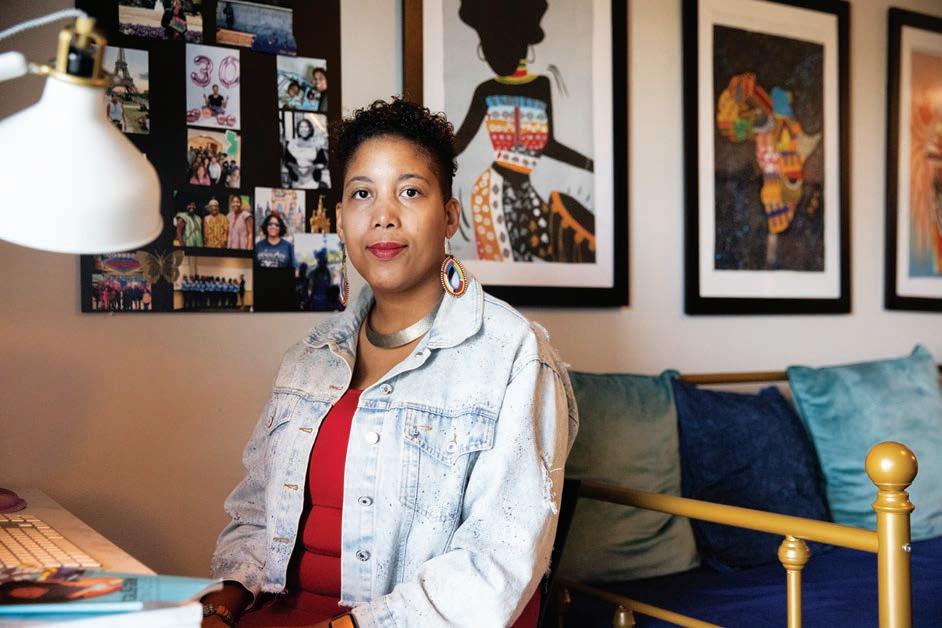
bers to showcase their art through a contest with other
To people like Joe Artz, the host of the slam, poetry is more than just making up clever sequences of words, especially for those who go out of their way to attend a poetry event.
Poetry can be an outlet for their emotions, a form of self-expression, or even a way to protest against social injustice.
“Slam poetry is more of a performance, not a reading,”
At every event, they bring in a featured poet, usually an accomplished writer of some sort who performs several of
Through every poem Crooks-Allen read, a chorus of snaps could be heard from the audience — a signal to the poet they enjoyed or resonated with a particular line.
“They really are very talented,” Cecilia Douglas, another
A majority of Crooks-Allen’s poems highlight their experience as a Black person from Irvington, New Jersey, and how their parents settled in predominantly Black commu-
Crooks-Allen used this background to enhance their emotional performance, ensnaring the attention of every
Although many of their poems received snaps from the audience, a portion from one, called “Trigger Warning,”
The lyricism provided a powerful message, resulting in a barrage of snaps and appreciative hums.
“So where am I supposed to go? I’ve heard I have too much melanin to pop pills and spill my secrets to stran-
gers; Too much strong Black woman to take a mental health day; Hair too curly to pull out; And skin too beautiful to scar,” Crooks-Allen read from “Trigger Warning.”
Although many of their poems stem from racial frustration, that’s not the only thing inspiring Crooks-Allen’s writing.
Like many others involved in creative work, they lean on peers, family members, and the stories of the community around them for inspiration.
“We are experts in our own lives and can share them with other people. I feel my best experiences of spoken word are through my poetry — just to really be able to connect and create that community for yourself,” Crooks-Allen said. Linda Muller, founder of the Iowa City Poetry Slam, said Crooks-Allen’s writing is a perfect example of how slam poetry can serve not only as a platform for those to share their poetry but also as a way to build connections between similarly talented people from different walks of life.

Sexy vs. scary, the Halloween costume debate
Arts reporters Hailey Sha er and Hannah Childers address the age-old Halloween dilemma.

In today’s culture, Halloween is widely considered to be the sexiest day of the year. During the weekend of Oct. 31, being wildly underdressed for the weather but fighting through every bit of cold for the sake of looking bodacious is fairly common. However, in full transparency, whether these costumes are empowering or problematic depends on who you ask.
In an effort to seek an outside perspective, I took the logical next step and spoke with fellow University of Iowa students! On Oct. 1, crammed between students trying to sell egregiously overpriced football tickets, a poll sat demurely on the
public Class of 2028 Snapchat story. It prompted viewers to choose whether they prefer sexy or scary costumes for Halloween. Unsurprisingly, the young adults of the 21st century leaned heavily in favor of sexy costumes.
Sarcasm aside, these Halloween costumes are far more significant than people give them credit for. They’re undeniably a form of expression.
If someone wants to express themself in a way that results in them looking super hot on a night dedicated to dressing up, I don’t think their choice should be criticized.
As the 2004 U.S. teen comedy film “Mean Girls” so eloquently put, “In the regular world, Halloween is when children dress up in costumes and beg for candy. In Girl World, Halloween is the one night a year when a girl can dress like a total slut and no other girls can say anything about it.”
But that shouldn’t exist solely in “Girl World.” Because for one day out of 365 in a year, girls, and anyone else who so desires, should have their time to shine and reflect their inner baddie.

The best Halloween costumes are the ones that scare you. If I see a person wearing fangs with blood dripping down their neck, I’ll flinch first and applaud second. On the day of ghosts and ghouls, that’s the whole point. Halloween gets its name from “All Hallows Eve,” the one day a year when ghosts are believed to walk the earth. On a day all about the dead, why pass up the opportunity to dress up as one? If dead people are not to your liking, there’s a multitude of scary creatures to choose from, like werewolves, vampires, zombies, and more. If it’s creepy, you can
wear it. Plus, if you’re like me and don’t want to freeze on Halloween, a vampire’s cloak or a werewolf costume can help keep the Halloweekend chill at bay. While I don’t have a poll to back my argument, I do have a list of hundreds of Halloween and horror movie-inspired costumes over the years. Not only can you watch your favorite ghosts, witches, and Pumpkin Kings — looking at you, Jack Skellington — on the screen, but now you can dress as them too. You can also go all out with the horrific makeup. The scarier the better. If you’re not great with makeup, that’s ok, because it’s really easy to turn some smeared lipstick into bloody drool or smudge some eyeshadow to make some crazy zombie eyes. Embrace the mess, and you’ll find yourself with an easy makeup look. On the night of horrors, as you’re going from one haunted house to the next, you’ll blend in with your fellow haunts. On the one night a year when you can be scary, if you don your ghostly garb, I bet you’ll have a spooktacular time.

